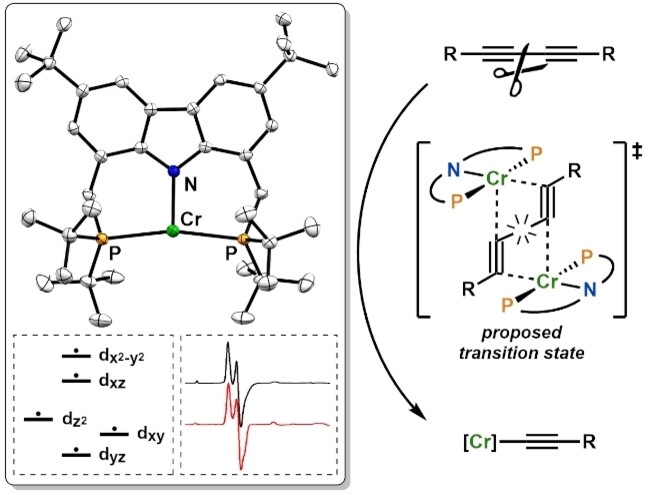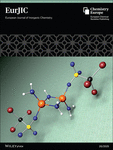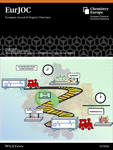Journal list menu
Export Citations
Download PDFs
Cover
Cover Picture: Mechanochemical Synthesis of Boroxine-linked Covalent Organic Frameworks (Angew. Chem. Int. Ed. 51/2024)
- First Published: 19 November 2024

Mechanochemistry …. … can be used in the synthesis of covalent organic frameworks (COFs), as reported by Xavier Ottenwaelder, Tomislav Friščić, Dmytro F. Perepichka et al. in their Research Article (e202404539). Based on this concept the first mechanochemical synthesis of boroxine-based 2D and 3D COFs with high surface area of up to 2,500 m2 g−1 was developed. The cover picture shows the structure of the monomers and the COF with the electron micrograph of the mechanochemically prepared COF in the background.
Inside Cover: Aza-Diarylethenes Undergoing Both Photochemically and Thermally Reversible Electrocyclic Reactions (Angew. Chem. Int. Ed. 51/2024)
- First Published: 24 October 2024
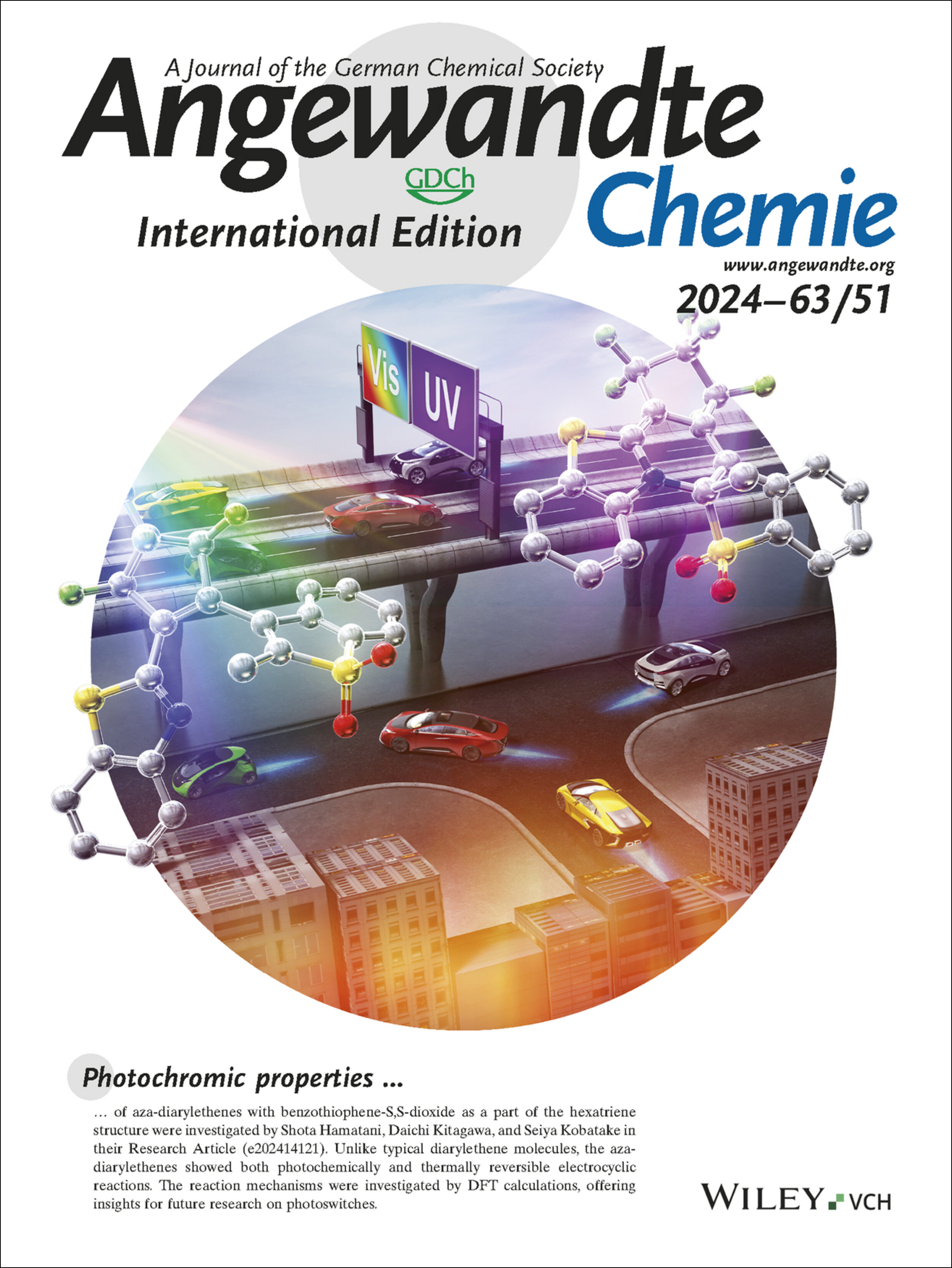
Photochromic properties of aza-diarylethenes with benzothiophene-S,S-dioxide as a part of the hexatriene structure were investigated by Shota Hamatani, Daichi Kitagawa, and Seiya Kobatake in their Research Article (e202414121). Unlike typical diarylethene molecules, the aza-diarylethenes showed both photochemically and thermally reversible electrocyclic reactions. The reaction mechanisms were investigated by DFT calculations, offering insights for future research on photoswitches.
Inside Back Cover: Collective Asymmetric Synthesis of Thiosilvatins (Angew. Chem. Int. Ed. 51/2024)
- First Published: 30 October 2024
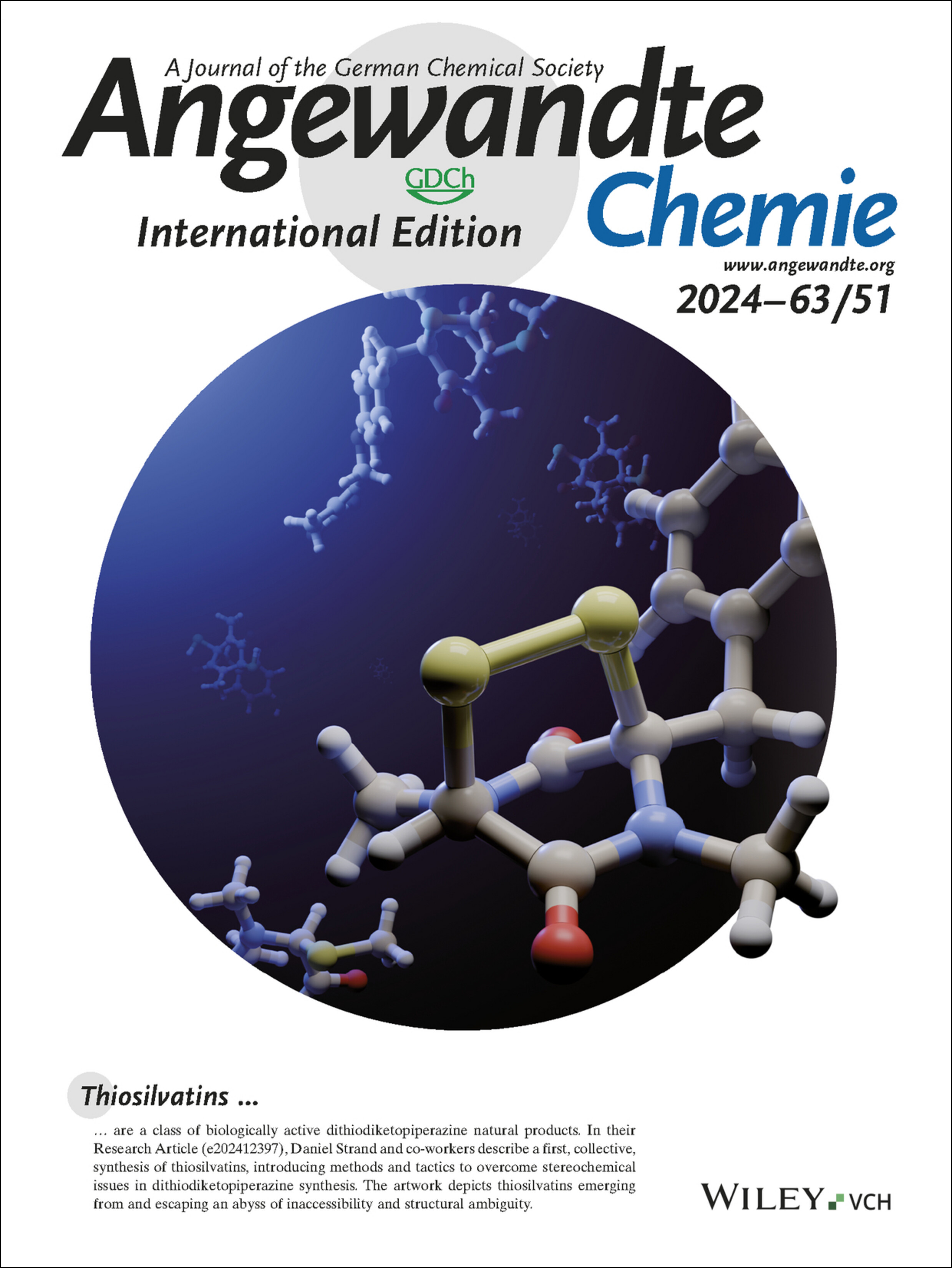
Thiosilvatins are a class of biologically active dithiodiketopiperazine natural products. In their Research Article (e202412397), Daniel Strand and co-workers describe a first, collective, synthesis of thiosilvatins, introducing methods and tactics to overcome stereochemical issues in dithiodiketopiperazine synthesis. The artwork depicts thiosilvatins emerging from and escaping an abyss of inaccessibility and structural ambiguity.
Back Cover: Unlocking of Hidden Mesopores for Enzyme Encapsulation by Dynamic Linkers in Stable Metal-Organic Frameworks (Angew. Chem. Int. Ed. 51/2024)
- First Published: 30 October 2024
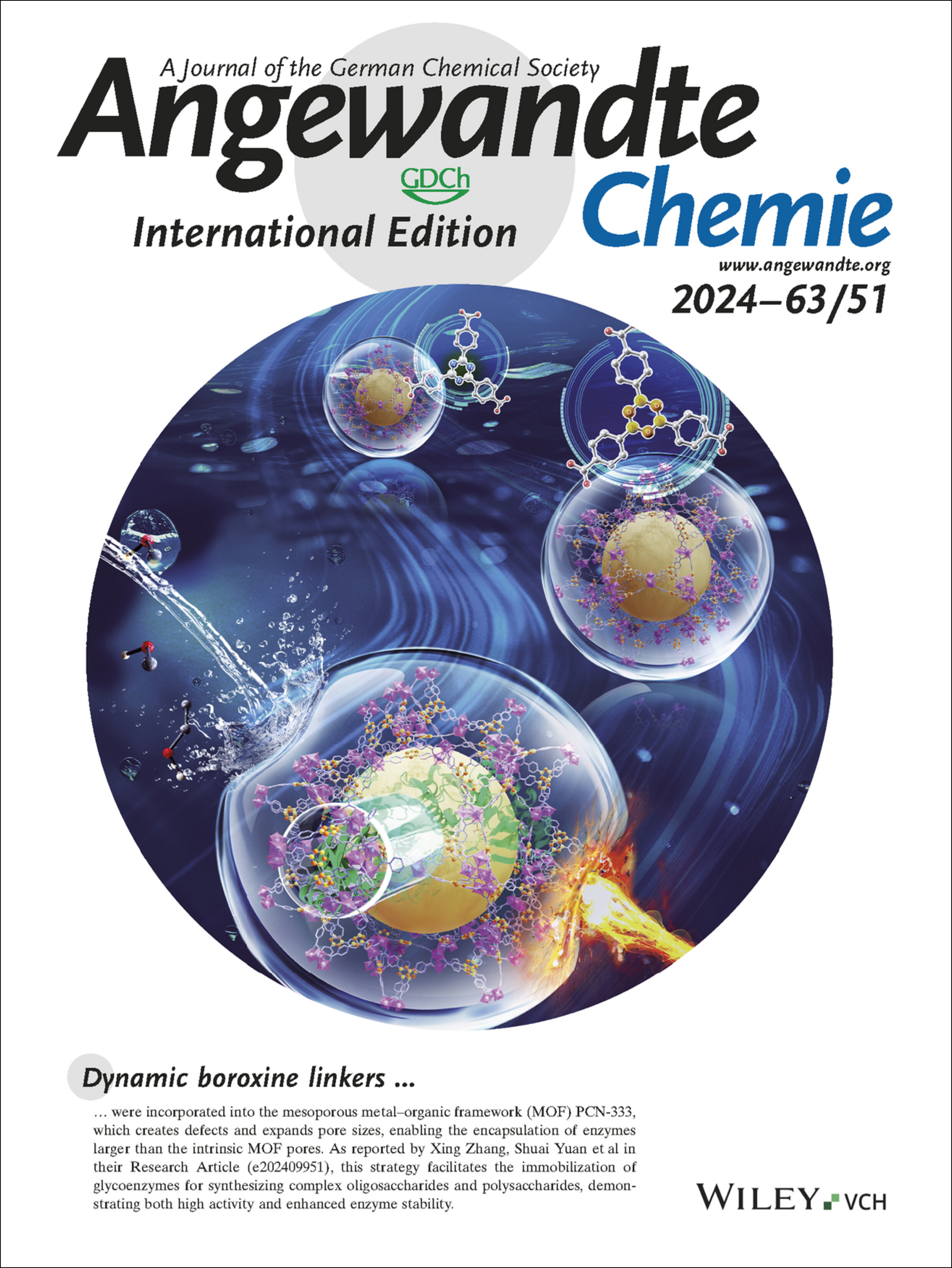
Dynamic boroxine linkers were incorporated into the mesoporous metal–organic framework (MOF) PCN-333, which creates defects and expands pore sizes, enabling the encapsulation of enzymes larger than the intrinsic MOF pores. As reported by Xing Zhang, Shuai Yuan et al in their Research Article (e202409951), this strategy facilitates the immobilization of glycoenzymes for synthesizing complex oligosaccharides and polysaccharides, demonstrating both high activity and enhanced enzyme stability.
Frontispiece
Frontispiece: Visible-Light-Driven Solid-State Fluorescent Photoswitches for High-Level Information Encryption
- First Published: 09 December 2024
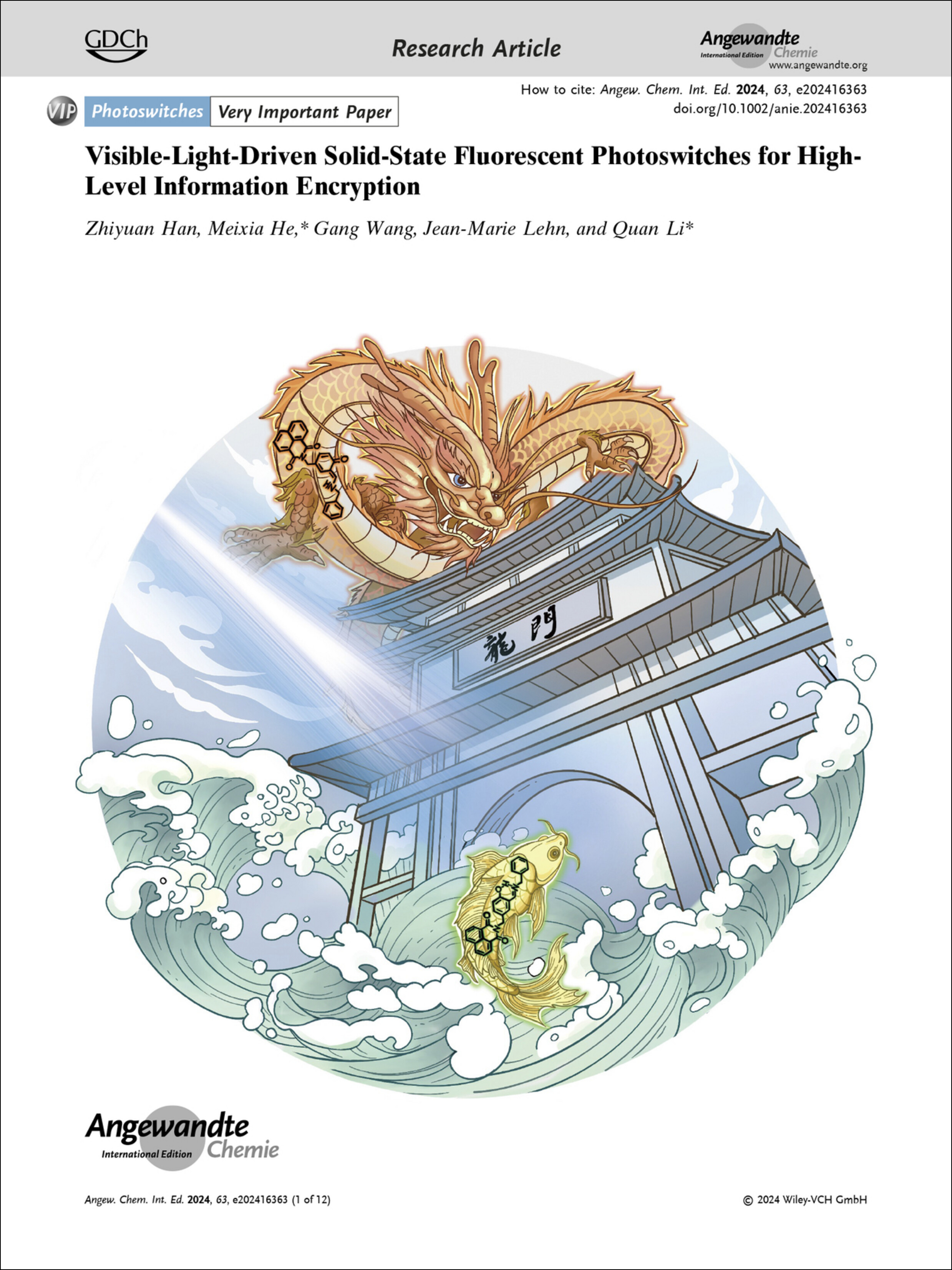
Photoswitches. A visible-light-driven solid-state fluorescent photoswitch based on salicylaldimine is reported by Meixia He, Quan Li and co-workers in their Research Article (e202416363). The innovative integration of naphthalimide with salicylaldimine enables rapid and reversible modulation of both color and fluorescence.
Frontispiece: Cell-Permeable Nicotinamide Adenine Dinucleotides for Exploration of Cellular Protein ADP-Ribosylation
- First Published: 09 December 2024
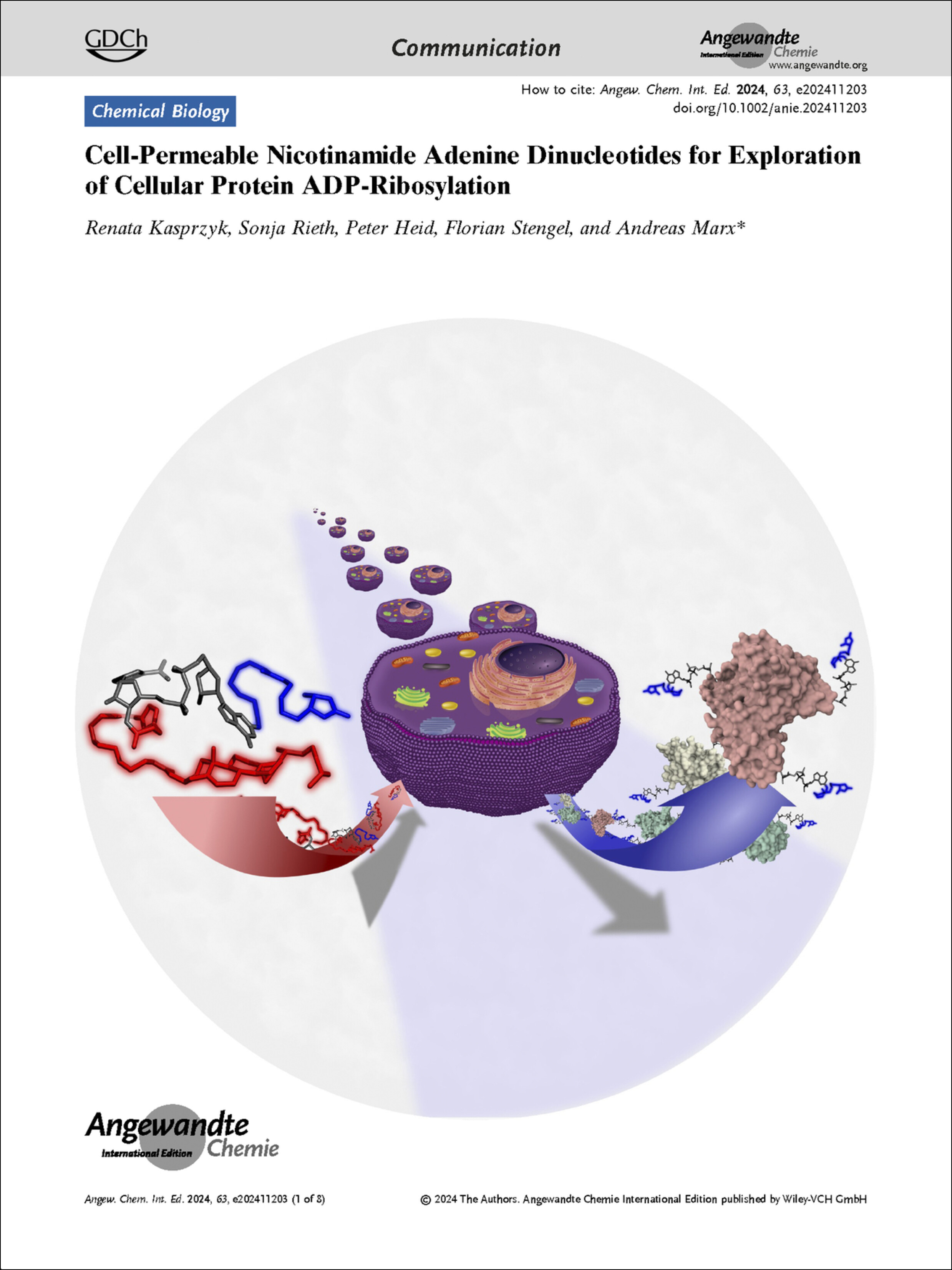
Nucleotides. In their Communication (e202411203), Andreas Marx et al. apply cell-permeable NAD+ analogs to identify ADP-ribosylation targets.
Graphical Abstract
Graphical Abstract: Angew. Chem. Int. Ed. 51/2024
- First Published: 09 December 2024
CORRIGENDUM
CORRIGENDUM: Correction to “Discovery of Hexagonal Structured Pd–B Nanocrystals”
- First Published: 07 November 2024
Introducing …
Benjamin Elling
- First Published: 24 October 2024

“My biggest motivation is to leave the world with more than I've taken from it… A key experience in my education was failing my first exam in graduate school. It quickly taught me that you can either take failure as a sign that you're not good enough or you believe in yourself enough to hit the books and try again…” Find out more about Benjamin Elling in his Introducing… Profile.
Xiaoli Dong
- First Published: 07 November 2024

“The most important factor in the choice of my current research topic was the urgent demand for high-performance rechargeable batteries to face the low-temperature scenarios… I advise my students to remain open-minded, think outside the box and look at problems from a third-person perspective…” Find out more about Xiaoli Dong in her Introducing… Profile.
Meeting Report
Organic Chemistry
Making, Using, and Understanding Molecular Systems: The 57th Bürgenstock Conference
- First Published: 29 October 2024
Highlight
Heterogeneous Catalysis
A Smart Design of Non-Noble Catalysts for Sustainable Propane Dehydrogenation
- First Published: 27 September 2024
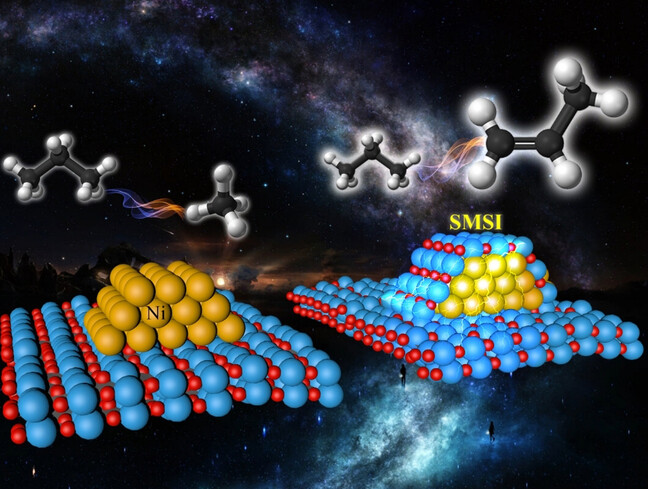
This paper highlights a smart sustainable Ni@TiOx catalyst, Ni encapsulated in TiOx, for propane dehydrogenation (PDH), as reported by Gong and co-workers. The catalyst demonstrates exceptional performance in PDH, achieving 94 % propylene selectivity and high stability. This design offers a cost-effective and environmentally friendly alternative to traditional noble metal-based catalysts, with potential for broader industrial applications.
Minireview
Synthetic Methods
Carbonylation Reactions at Carbon-Centered Radicals with an Adjacent Heteroatom
- First Published: 09 September 2024

This Minireview describes the most recent advances in carbonylative transformations involving heteroatom adjacent carbon radicals, specifically including the heteroatoms oxygen (O), nitrogen (N), phosphorus (P), silicon (Si), sulfur (S), boron (B), fluorine (F), and chlorine (Cl). The reaction mechanisms are also described in detail.
Photocatalysis
Carbon- and Nitrogen-Based Complexes as Photocatalysts for Prebiotic and Oxygen Chemistry during Earth Evolution
- First Published: 06 September 2024
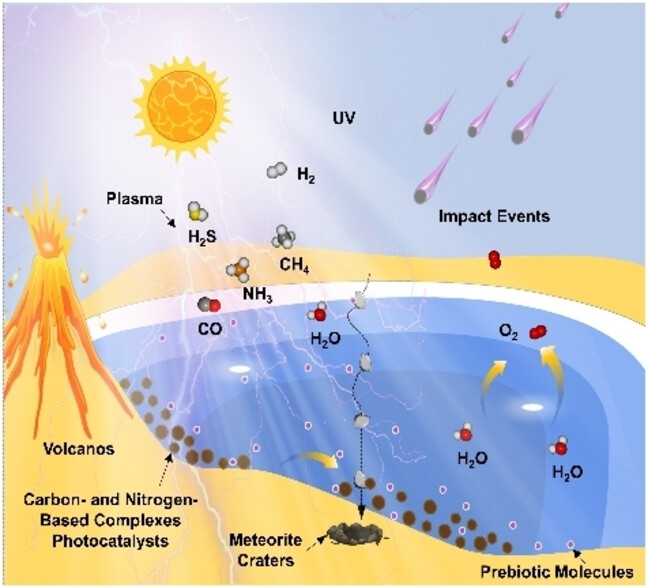
Sunlight has long been the primary energy source for our planet. This minireview highlights its importance and investigates the potential revolutionary impact of photocatalysis on Earth. It examines fundamental processes, including the formation of prebiotic molecules and the oxygen evolution reaction via water oxidation. Additionally, the review assesses various carbon and nitrogen-based complexes photocatalysts and their roles in driving chemical reactions. It further provides insights into possible evolutionary pathways for Earth, emphasizing the pivotal influence of carbon and nitrogen-based photocatalysts in the development of Earth.
Theranostics
Review
Organic Materials
Recent Advances of Organic Cocrystals in Emerging Cutting-Edge Properties and Applications
- First Published: 21 September 2024
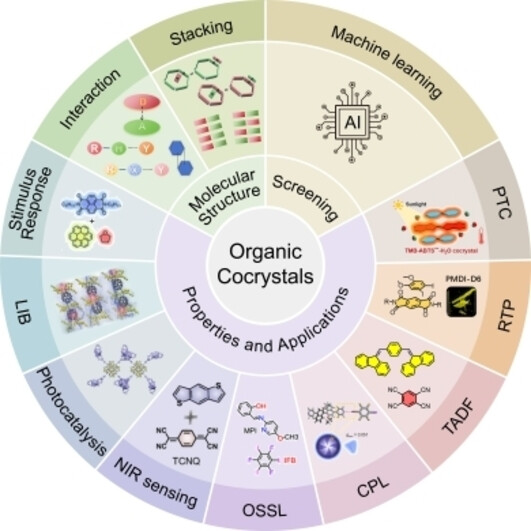
This review outlines the recent advances of organic cocrystals in emerging cutting-edge properties and applications during the nearest five years including PTC, RTP, TADF, CPL, OSSLs, NIR sensing, photocatalysis, batteries, and stimuli responses, along with the structure–property relationship, limitations, prospects and some inspirations for future investigations.
Research Article
Photoswitches | Very Important Paper
Visible-Light-Driven Solid-State Fluorescent Photoswitches for High-Level Information Encryption
- First Published: 24 September 2024
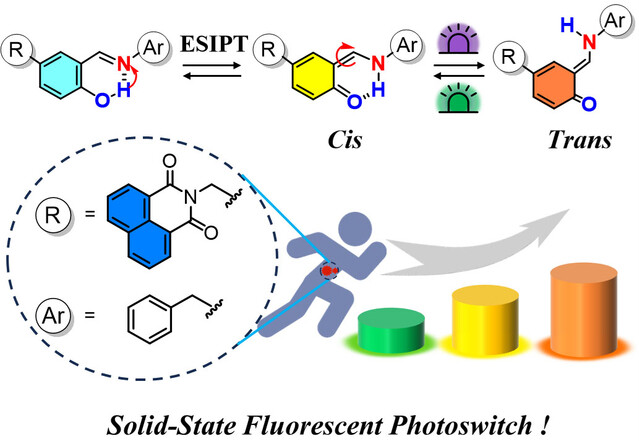
Enabled by excited-state intramolecular proton transfer (ESIPT) and cis-trans isomerization, visible-light-driven solid-state fluorescent photoswitch has been developed. It was obtained by incorporating a bulky naphthalimide group into a salicylaldimine. The photoswitch shows triple fluorescence switching, showing potential application in high-level information encryption.
Photoswitches | Hot Paper
Aza-Diarylethenes Undergoing Both Photochemically and Thermally Reversible Electrocyclic Reactions
- First Published: 28 August 2024
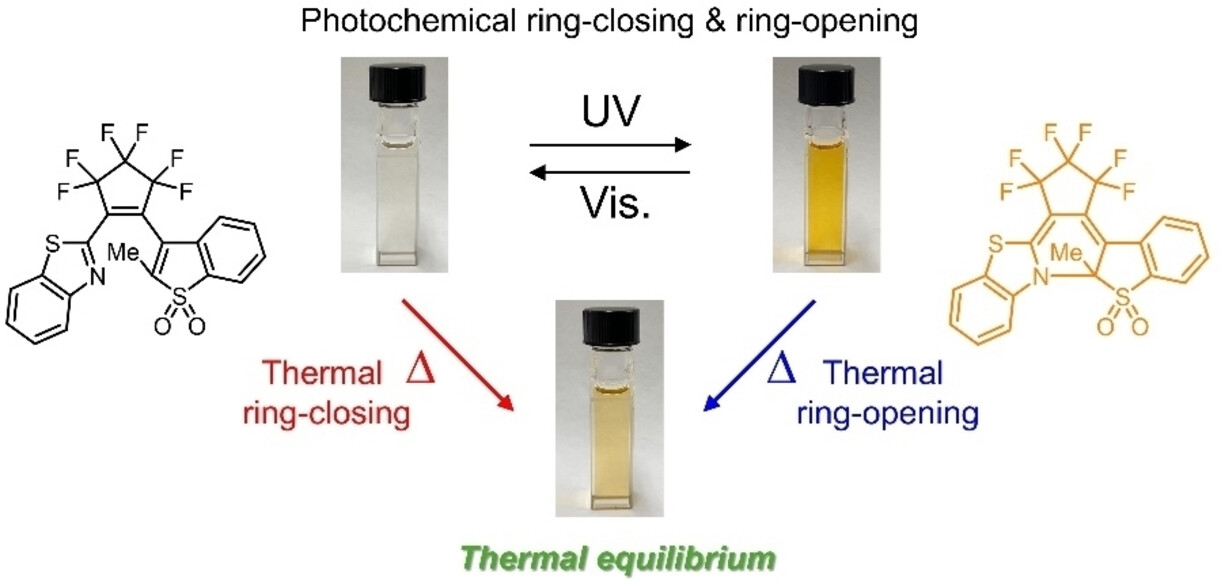
Aza-diarylethenes with benzothiophene-S,S-dioxide as a part of the hexatriene structure undergo bidirectional thermal isomerization in addition to bidirectional photochemical isomerization due to a small energy difference between the open- and the closed-ring isomers. Kinetic analysis and theoretical calculations revealed the detailed mechanisms of the photochemical and thermal reactions. Using these unique properties, both light-writing/light-erasing and heat-writing/light-erasing systems were demonstrated.
Photocatalysis
Tunable Isometric Donor-Acceptor Wurster-Type Covalent Organic Framework Photocathodes
- First Published: 13 August 2024
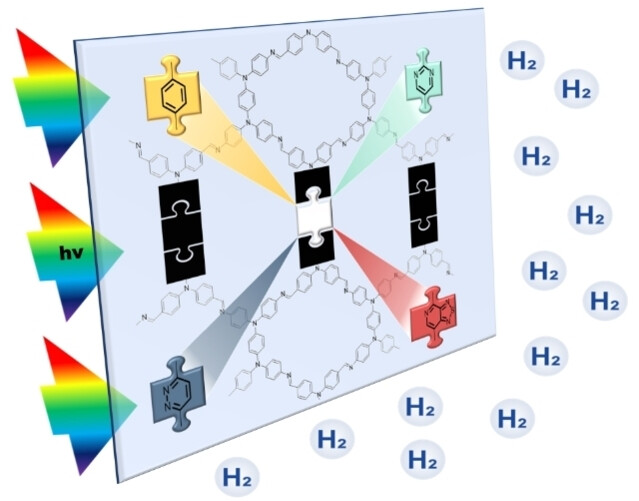
Covalent organic frameworks (COFs) are crystalline polymeric materials featuring wide-ranging structural control and modularity. The synthesis of a series of donor-acceptor-donor Wurster building blocks enabled the formation of isostructural, photoactive COFs with distinct optical features in thin films. These COFs were further applied for photoelectrochemical water splitting.
Enzyme Encapsulation | Hot Paper
Unlocking of Hidden Mesopores for Enzyme Encapsulation by Dynamic Linkers in Stable Metal-Organic Frameworks
- First Published: 23 August 2024
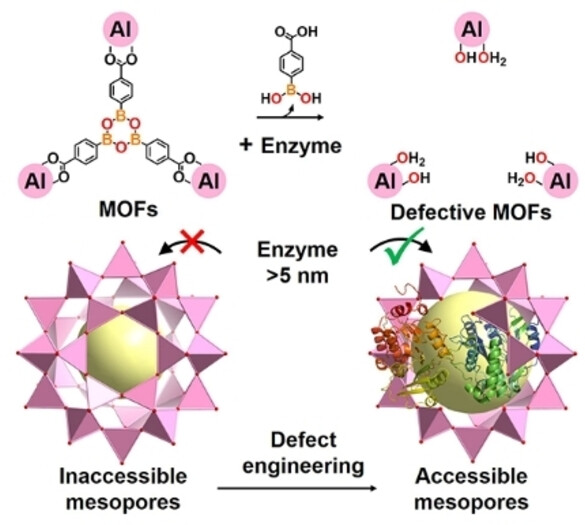
Introducing dynamic boroxine linkers into mesoporous PCN-333 creates defects that expand pore sizes, enabling the encapsulation of enzymes larger than the inherent pore size of MOFs. This strategy allows the immobilization of glycoenzymes in MOFs for synthesizing complex oligosaccharides and polysaccharides, demonstrating high activity and enhanced enzyme stability.
Bioimaging
A Nitroreductase-Activatable Metabolic Reporter for Covalent Labeling of Pathological Hypoxic Cells in Tumorigenesis
- First Published: 16 August 2024
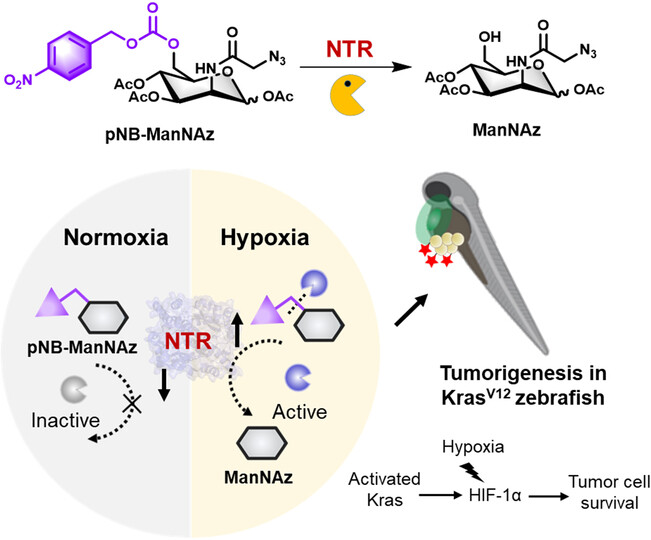
Under pathophysiological hypoxic environments, the caged non-metabolizable precursor pNB-ManNAz exhibited responsiveness to cellular NTR, culminating in structural self-immolation and the resultant ManNAz could be incorporated onto the cell surface glycoproteins, thereby facilitating fluorescence labeling via bioorthogonal chemistry. This NTR-responsive metabolic reporter demonstrated broad applicability for specific hypoxia labeling in diverse cell lines, particularly in the monitoring of orthotopic tumorigenesis and targeted tumor phototherapy in zebrafish models.
Solar Cells
Efficient and Stable Inverted Perovskite Solar Cells Enabled by a Fullerene-Based Hole Transport Molecule
- First Published: 16 August 2024
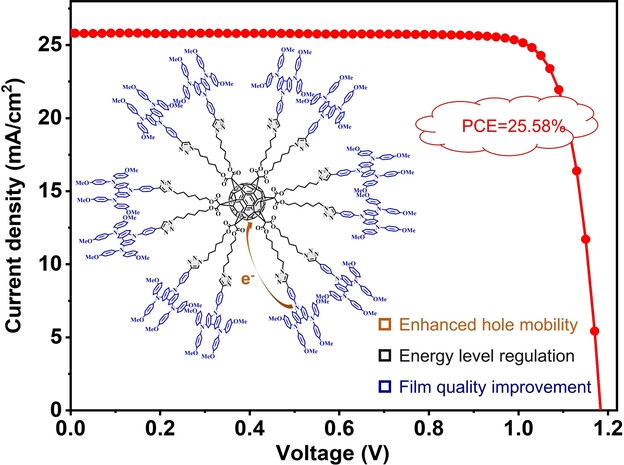
A novel fullerene-based hole transport material (FHTM) has been designed and synthesized, exhibiting high hole mobility through intramolecular electron transfer. Incorporating FHTM at the NiOx/perovskite interface optimizes the energy level alignment and improves the quality of the perovskite layer. This integration results in an inverted perovskite solar cell with a champion efficiency of 25.58 % (certified:25.04 %) and enhanced stability.
Electrochemistry
Oscillating Structural Transformations in the Electrochemical Synthesis of Graphene Oxide from Graphite
- First Published: 22 August 2024

In situ time-resolved X-ray diffraction studies of electrochemical graphite oxidation in aqueous sulfuric acid reveal periodic structural changes of a graphite intercalation compound (GIC) into “pristine graphite oxide”. The potential oscillations of the graphite electrode correlate with the appearance and disappearance of a solid phase identified as stage-1 GIC. The observed phenomenon can be considered as a new type of oscillating reaction.
Antibacterial Agents
Structure-Guided Discovery of a Potent Inhibitor of the Ferric Citrate Binding Protein FecB in Vibrio Bacteria
- First Published: 20 September 2024

Iron acquisition is a crucial factor for bacterial growth, and its transport process could be a promising target for antibacterial drugs. A potent molecular inhibitor of the ferric citrate binding protein FecB has been discovered. The findings provide new insight into the modulation of ferric ion acquisition pathways and their application to pathogen growth suppression.
Perovskite Solar Cells | Very Important Paper
Extending Shelf-Life of Two-Step Method Precursor Solutions through Targeted Regulation for Highly Efficient and Reproducible Perovskite Solar Cells
- First Published: 14 September 2024

The commercialization of PVSCs is hindered by poor reproducibility due to the chemical instability of the solution-processed materials. We first observe that the aging phenomenon is more pronounced in the precursor solution of the two-step sequential method compared to that in the one-step method due to the difference in the used solvents. Here, an effective targeted strategy for precursor stabilization by introducing benzene-1,3-dithiol (BDT) and decamethylferrocene (FcMe10) additives into the organic amine salt solution and the PbI2 precursor solution, thus extending the shelf-life of the two-step precursor solutions.
Asymmetric Synthesis
Copper-Catalyzed Enantioselective Dehydro-Diels–Alder Reaction: Atom-Economical Synthesis of Axially Chiral Carbazoles
- First Published: 13 September 2024
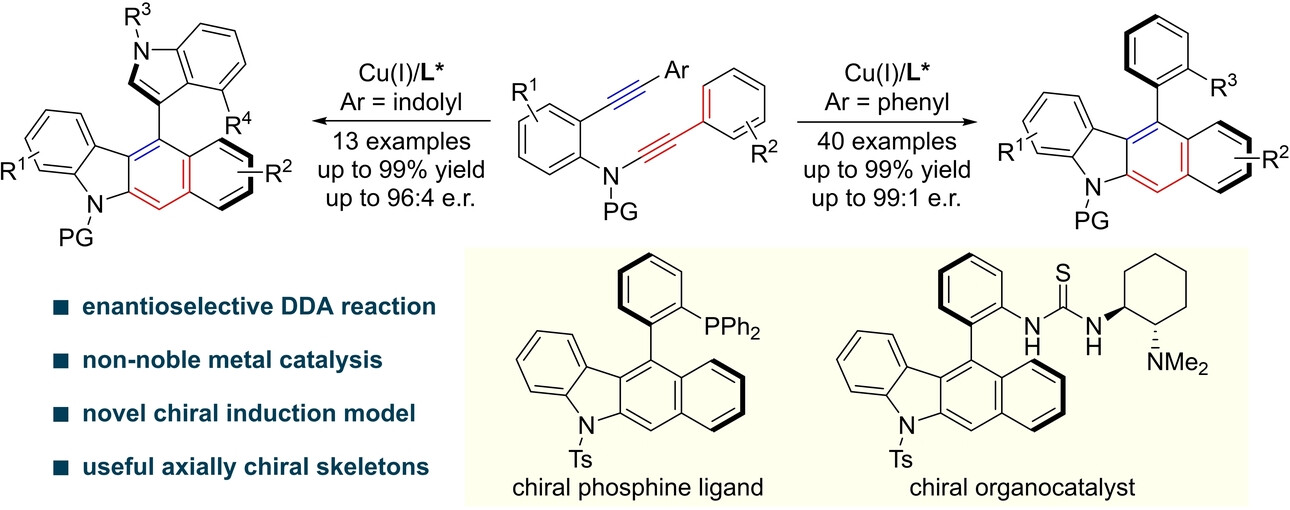
A copper-catalyzed enantioselective dehydro-Diels–Alder reaction has been realized via vinyl cation pathway, enabling the atom-economical synthesis of axially chiral phenyl and indolyl carbazoles. This protocol continues the first example of non-noble metal-catalyzed enantioselective DDA reaction. Notably, the constructed axially chiral carbazoles are applicable to asymmetric catalysis.
Cluster Compounds
Strain-Induced Structural Rearrangement Towards a White-Light-Emitting Adamantane-Type Cluster Dimer
- First Published: 19 August 2024
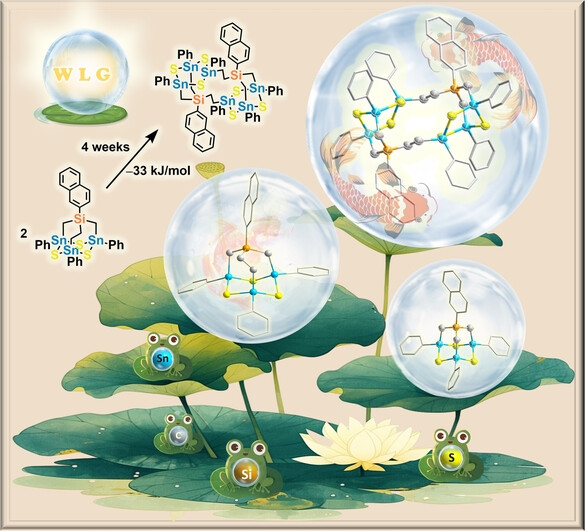
The introduction of an ethylene bridge into a quaternary adamantane-type cluster core {Si(CH2)n(C2H4)mSn3S3} (n/m=3/0 or 2/1) causes distinct distortions, which the molecules escape by an unprecedented dimerization of the cluster cores. This structural change affects the (extreme) nonlinear optical properties of such white-light emitting materials, as shown by a combined experimental and quantum-chemical study.
Hydrogen-Bonded Organic Frameworks | Hot Paper
Construction of Highly Porous and Robust Hydrogen-Bonded Organic Framework for High-Capacity Clean Energy Gas Storage
- First Published: 13 August 2024
Heterogeneous Catalysis | Very Important Paper
In-Situ Dynamic Carburization of Mo Oxide with Unprecedented High CO Formation Rate in Reverse Water-Gas Shift Reaction
- First Published: 14 August 2024
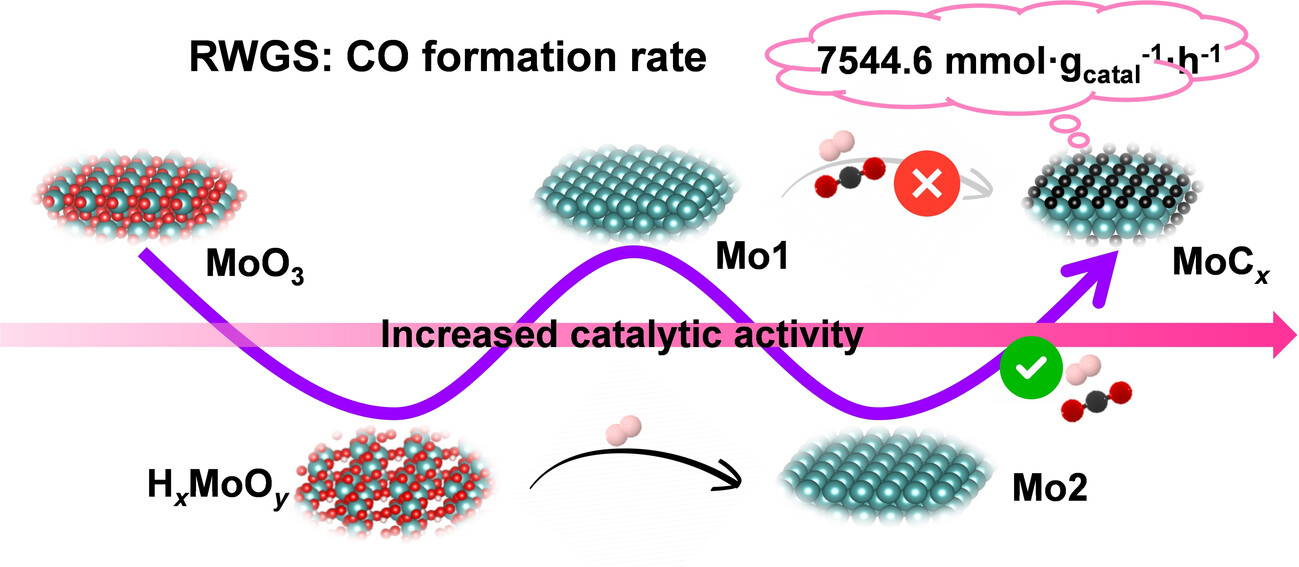
In situ carburization of the Mo-based catalyst at 500 °C is achieved in RWGS reaction. The surface O/Mo atomic ratio plays significant role in carburization, i.e., lower surface O/Mo atomic ratio is beneficial to carburization. In situ carburization induced by reaction product of CO strongly promotes the RWGS activity showing CO formation rate of 7544.6 mmol ⋅ gcatal−1 ⋅ h−1.
Polymer Chemistry
Controlled Ring-Opening Polymerization of Methyl Glycolide with Bifunctional Organocatalyst
- First Published: 11 September 2024
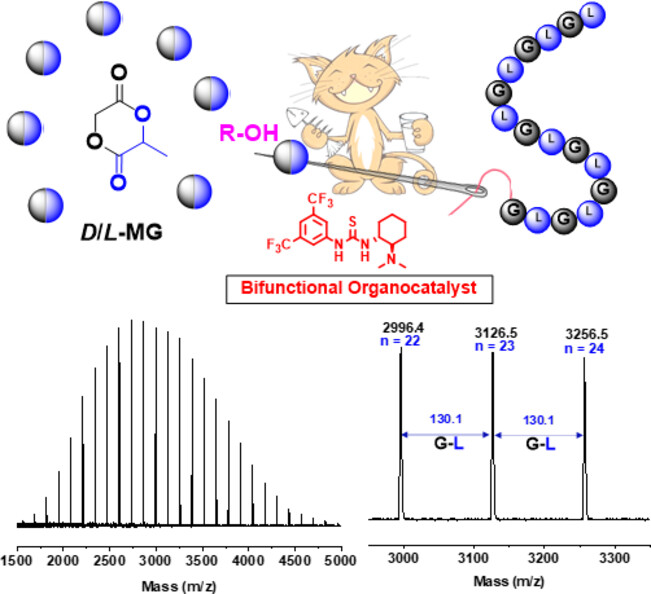
For the first time, a bifunctional thiourea-amine-based organocatalyst has been employed in the ring-opening polymerization of optically active D- and L-methyl glycolide (MG) at room temperature. This innovative, metal-free catalytic approach leads to highly alternating poly(lactic-co-glycolic acids) (PLGAs), both in linear and star-shaped forms. The synthesized PLGAs exhibit high regioselectivity, consistent alternating structure, recyclability, and atactic microstructure, making them suitable for drug delivery applications.
Cancer Therapy
Anticancer Tetranuclear Cu(I) Complex Catalyzes a Click Reaction to Synthesize a Chemotherapeutic Agent in situ to Achieve Targeted Dual-Agent Combination Therapy for Cancer
- First Published: 19 September 2024

A novel tetranuclear Cu(I) complex (Cu4) was developed based on apoferritin, which not only inhibited tumor growth through cuproptosis and cuproptosis-induced immunity, but also possessed significant CuAAC reaction to synthesize a chemotherapeutic resveratrol analogue in situ for achieving targeted dual-drug combination therapy for cancer.
MXenes
Proton-Driven Dynamic Behavior of Nanoconfined Water in Hydrophilic MXene Sheets
- First Published: 20 August 2024
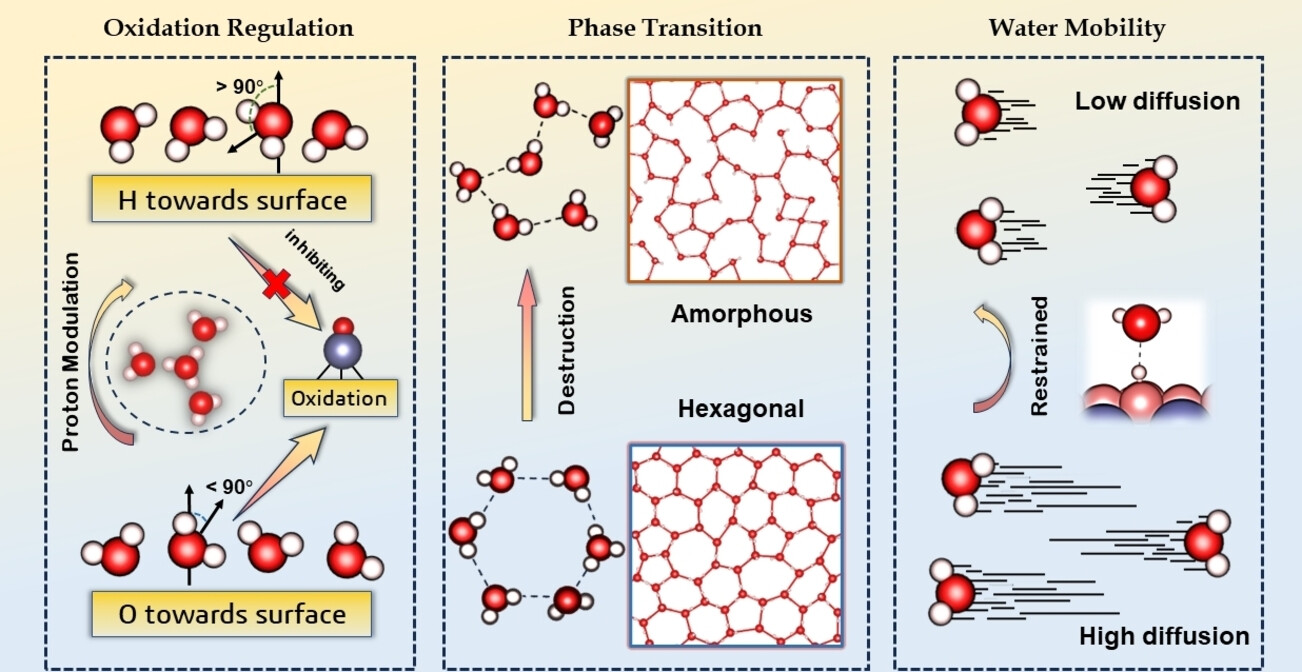
We reported the detailed proton-driven dynamic behaviors of nanoconfined water between hydrophilic MXene sheets using molecular dynamics simulation based on the active learning potential trained by deep neural network algorithms. These findings have illuminated several novel phenomena including the MXene oxidation rate regulated by protons, the formation of a hexagonal ice phase exhibiting unconventional bonding patterns at room temperature, and a significant reduction in water diffusivity.
Oligosaccharides
Enzymatic Synthesis of Disialyllacto-N-Tetraose (DSLNT) and Related Human Milk Oligosaccharides Reveals Broad Siglec Recognition of the Atypical Neu5Acα2-6GlcNAc Motif
- First Published: 02 September 2024

Taking advantage of the efficiency and substrate promiscuity of human ST6GalNAc enzymes along with a panel of enzyme modules, a library of human milk oligosaccharides (HMO) containing an atypical Neu5Aca2-6GlcNAc linkage including disialyllacto-N-tetraose (DSLNT) was synthesized for the first time. Glycan microarray assays revealed broad yet distinct recognition by Siglecs of the atypical Neu5Aca2-6GlcNAc motif.
Single-Molecule Studies
Spin-State Switching of Spin-Crossover Complexes on Cu(111) Evidenced by Spin-Flip Spectroscopy
- First Published: 26 August 2024

Spin-state switching of a spin-crossover complex on Cu(111) induced by injection of tunneling electrons. The spin-state is readout from the low-voltage differential-conductance spectrum: the high-spin state exhibits magnetic excitation steps evolving with the application of a magnetic field while no spectroscopic feature is observed in the low-spin state.
Zinc-Iodine Batteries
Multifunctional Interface Layer Constructed by Trace Zwitterions for Highly Reversible Zinc Anodes
- First Published: 01 September 2024
Lithium Metal Batteries
Eliminating Hydrogen Fluoride through Piperidine-Doped Separators for Stable Li Metal Batteries with Nickel-Rich Cathodes
- First Published: 30 August 2024
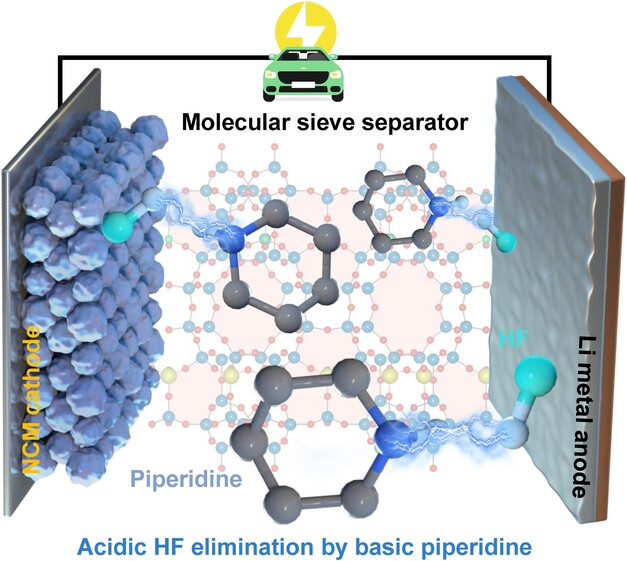
An integrated molecular sieve@piperidine-decorated polyethylene separator is proposed for eliminating the H2O-derived HF directly by an acid-base mechanism rather than the elimination of H2O. This successfully enables LMBs with a LiF-rich SEI and stable cathode structure during cycling in an electrolyte with high H2O content.
Alzheimer's Disease
Drug Discovery and Screening Tool Development for Tauopathies by Focusing on Pathogenic Tau Repeat 3 Oligomers
- First Published: 24 September 2024

To identify the core region driving tauopathy, tau repeats within the microtubule-binding domain were synthesized and assessed for pathogenic traits. Repeat 3 initiated amyloid formation, cytotoxicity, and cognitive decline, with oligomeric aggregates showing pronounced neurotoxicity. This pathological form was utilized in a screening platform, leading to the discovery of tolcapone as a potent anti-tau agent. (SPPS=solid-phase peptide synthesis)
Lithium Metal Recovery | Very Important Paper
Lithium Metal Recovery from Sea Water by a Flexible and Scalable Membrane with Lithium-Ion Exclusive Channels
- First Published: 03 September 2024
Halogen Bond
Halogen Bonding Initiated Difunctionalization of [1.1.1]Propellane via Photoinduced Polarity Match Additions
- First Published: 28 August 2024
![Halogen Bonding Initiated Difunctionalization of [1.1.1]Propellane via Photoinduced Polarity Match Additions](/cms/asset/30c490a3-6ae2-4dd9-9af9-65a35f46fd17/anie202411961-toc-0001-m.jpg)
In this work, XB adducts are formed between BzI-tethered amines and amines via the halogen bonding. After photofragmentation, the α-aminoalkyl radicals are generated and subsequently undergo radical addition to [1.1.1]propellane, yielding BCP radicals that participate in polarity-matched additions, culminating in the difunctionalization of bicyclopentane. The versatility of this approach is underscored by a series of valuable transformations.
Binuclear Metal Sites | Hot Paper
Reversible Multi-Complexation of CO2 to Alkaline Earth Metal Ion-Pair at 400 ppm and 298 K
- First Published: 09 September 2024
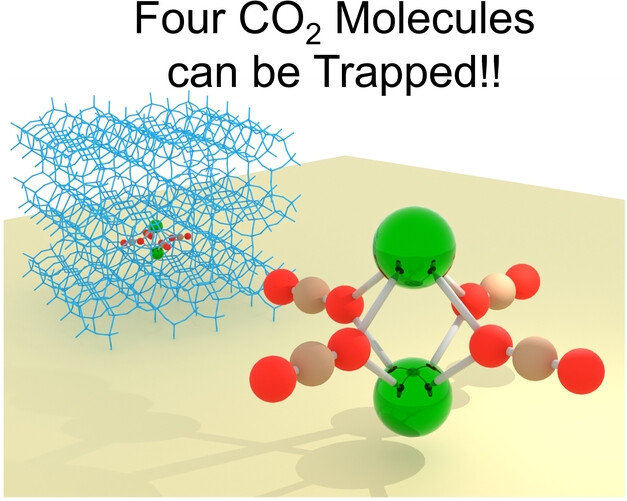
Breaking upper limit of CO2-uptake at low-pressure using porous materials is challenging due to the lack of multiple adsorption mechanisms. This study presents a novel concept of reversible multi-complexation of CO2 to alkaline earth metal ion-pairs in ferrierite-type zeolite with the formation of unprecedented CO2-complexes even at 400 ppm and 298 K. The findings in the present study offer a new direction for efficient CO2 adsorbents.
Zinc Metal Batteries | Very Important Paper
Simultaneous Inhibition of Vanadium Dissolution and Zinc Dendrites by Mineral-Derived Solid-State Electrolyte for High-Performance Zinc Metal Batteries
- First Published: 28 August 2024
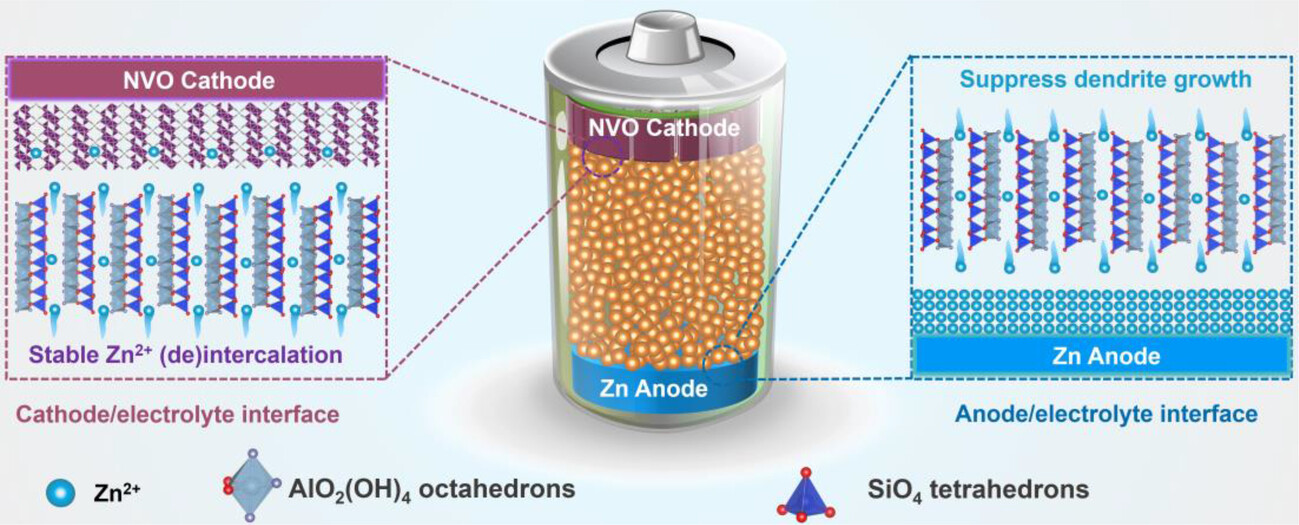
Kaolin is demonstrated as an effective material to prepare Zn-based solid electrolyte (KL-Zn), which simultaneously eliminates the interfacial side reactions of zinc anode and inhibits the vanadium dissolution of NH4V4O10 cathode, endowing high reversible capacity and superior cyclic stability for Zn//NH4V4O10 batteries.
Zinc-Air Batteries | Hot Paper
The Asymmetrical Fe−O−Se Bonds in Fe2O(SeO3)2 Boosting Bifunctional Oxygen Electrocatalytic Performance for Zinc-Air Battery
- First Published: 03 September 2024
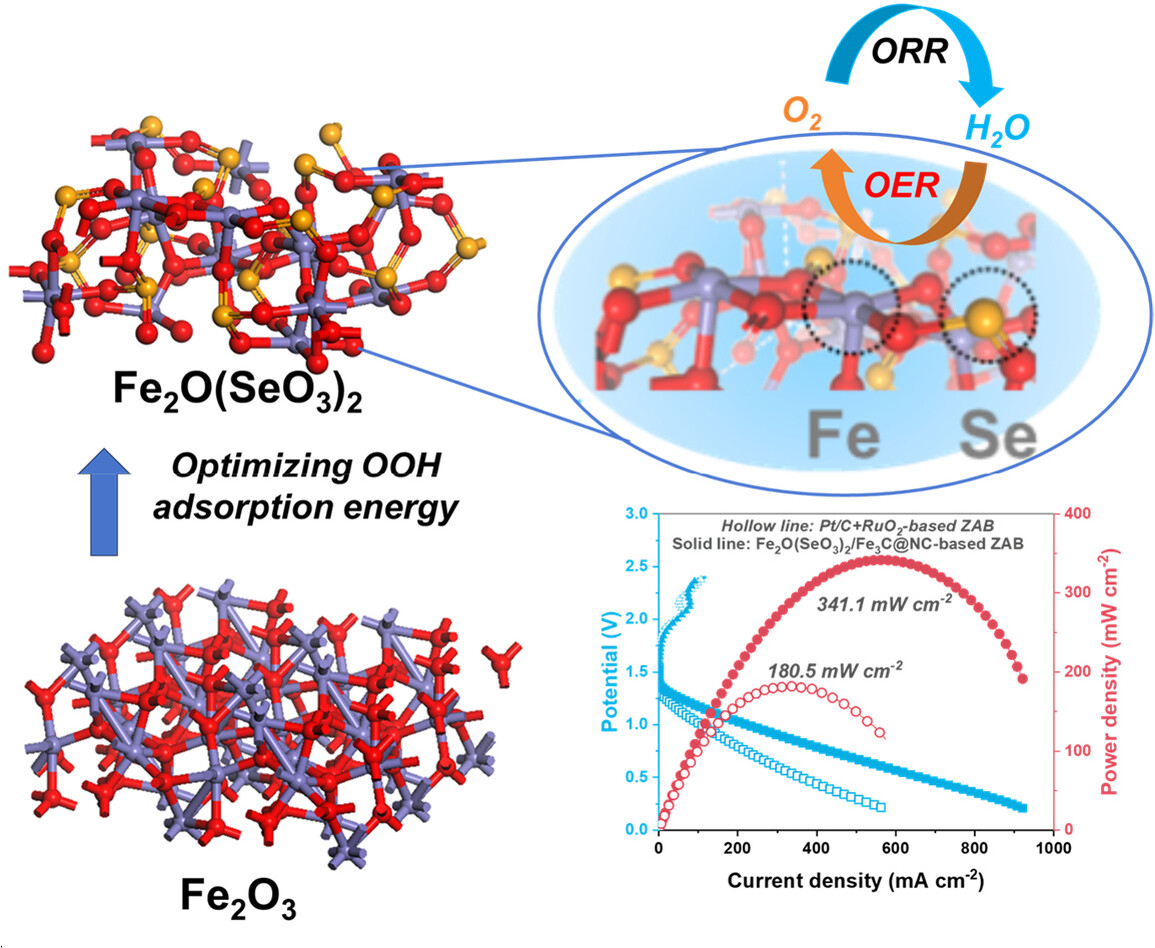
The N-doped carbon-coated Fe-based selenium oxide catalyst Fe2O(SeO3)2/Fe3C@NC was fabricated for zinc-air batteries (ZABs). The Fe−O−Se bonds in Fe2O(SeO3)2/Fe3C@NC@NC could obviously enhance catalytic performance of ORR and OER because it can modify coordination environment surrounding Fe atoms and accordingly realize an optimization of the adsorption energy of oxygen intermediates. Furthermore, the Fe2O(SeO3)2/Fe3C@NC-based ZABs exhibit superior peak power density and specific capacity in comparison to Pt/C+RuO2-based ZABs.
Photosynthesis
Long-Term Autotrophic Growth and Solar-to-Chemical Conversion in Shewanella Oneidensis MR-1 through Light-Driven Electron Transfer
- First Published: 28 August 2024
CO2 Reduction | Very Important Paper
Cu(I)-Induced ‘Click Reaction’ Involving Coordination and Covalent Assembly of Hybrid Borates for the Electrocatalytic CO2 Reduction
- First Published: 12 September 2024
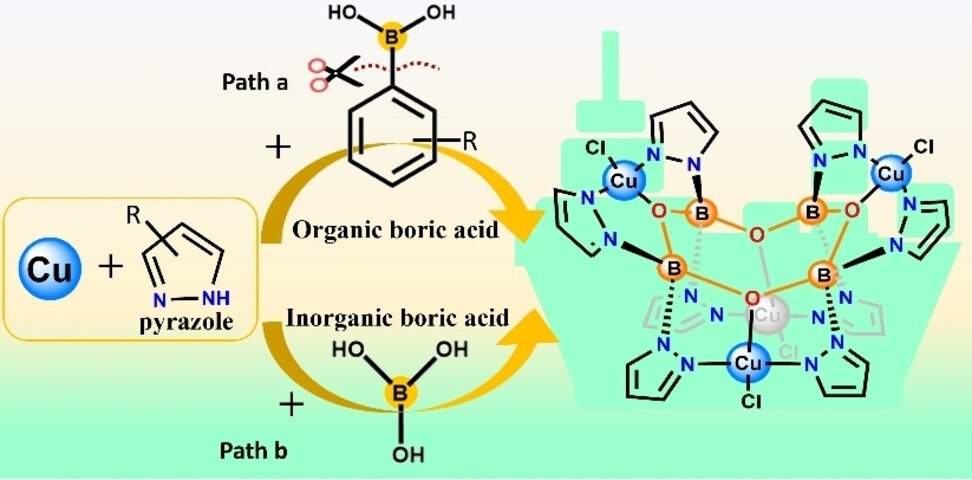
A facile synthetic method is developed to synthesize a large family of pyrazole molecule-protected borates containing cyclic eight-membered B4O4-ring as corns, in a rapid and precise manner under mild conditions. The obtained borates proved to be good electrocatalytic catalysts for CO2 reduction reaction towards HCOOH and C2H4.
Hydrogen Evolution Reaction | Hot Paper
Operando Stable Palladium Hydride Nanoclusters Anchored on Tungsten Carbides Mediate Reverse Hydrogen Spillover for Hydrogen Evolution
- First Published: 05 September 2024
Photocatalysis | Hot Paper
Exchange of CO2 with CO as Reactant Switches Selectivity in Photoreduction on Co−ZrO2 from C1–3 Paraffin to Small Olefins
- First Published: 18 September 2024
Graphene
Growth Kinetics of Graphene on Cu(111) Foils from Methane, Ethyne, Ethylene, and Ethane
- First Published: 28 October 2024
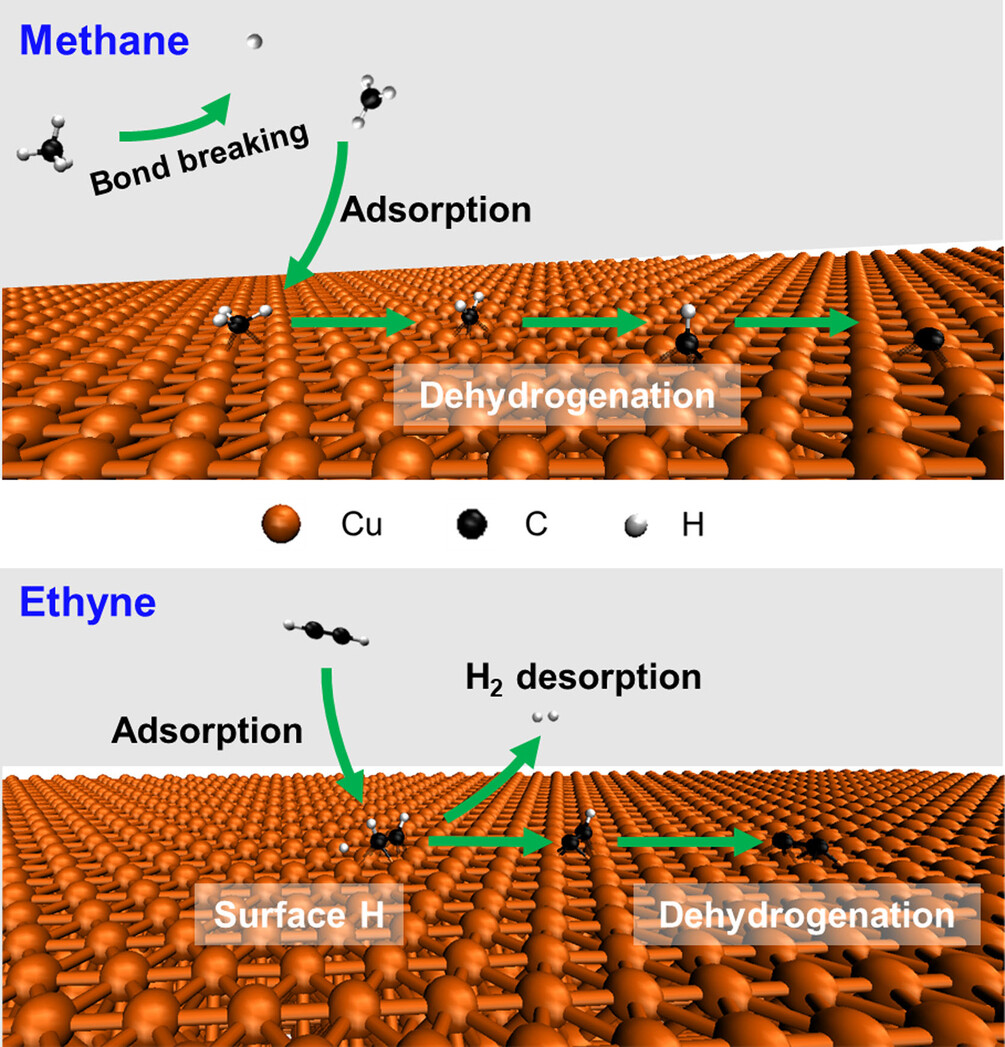
We obtained the activation enthalpies of graphene island growth on Cu(111) foils using H2 and: CH4, and C2H2, C2H4, and C2H6, respectively. The rate determining step (RDS) for CH4 is its gas phase decomposition to H and CH3. The RDS for C2H2, C2H4, and C2H6 is dehydrogenation on the Cu(111) surface yielding adsorbed C2H1, C2H3, and C2H5, respectively.
Zinc-Ion Batteries | Hot Paper
Constructing Quasi-Single Ion Conductors by a β-Cyclodextrin Polymer to Stabilize Zn Anode
- First Published: 28 August 2024
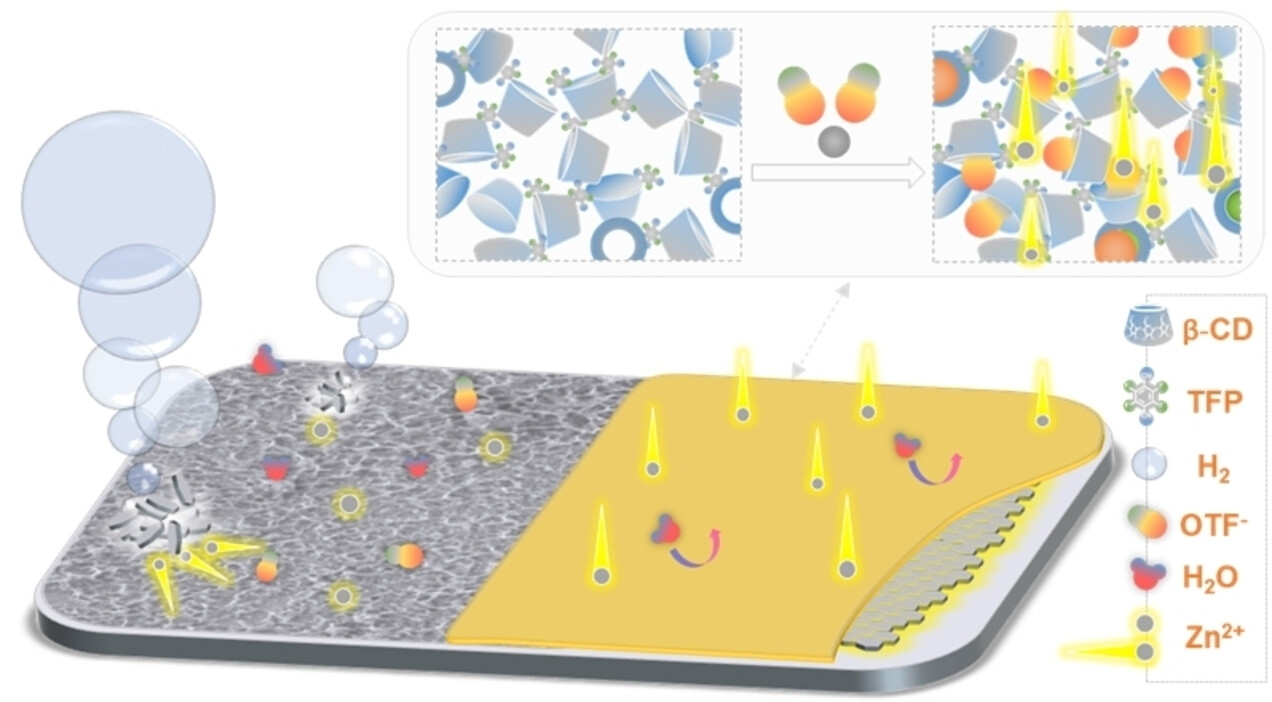
A β-cyclodextrin polymer is used to construct a quasi-single ion conductor for coating the Zn anodes, and thereby inhibited the corrosion of Zn anode, prevented the side reaction, elevated the Zn ion transference number, suppressed the formation of space charge regions and stabilized the plating/striping of Zn ions.
Organic Materials | Very Important Paper
Visualizing Triplet Energy Transfer in Organic Near-Infrared Phosphorescent Host-Guest Materials
- First Published: 21 September 2024
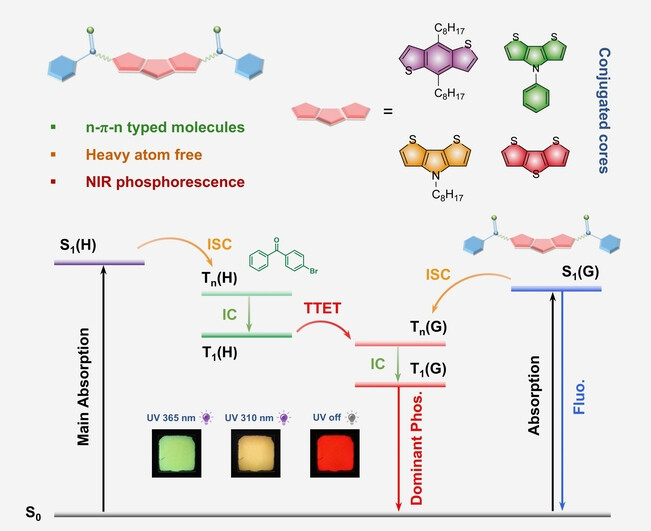
Novel NIR phosphors are constructed using a n-π-n molecular design strategy. Their phosphorescence can be readily modulated by altering the conjugated core structures. When incorporated into a 4-bromobenzophenone host, these materials exhibit efficient NIR phosphorescence ranging from 655–710 nm. Analysis of the exciton transition process reveals that the enhanced phosphorescence of the guest originates from the triplet energy transfer of abundant triplet excitons generated independently by the host material.
Batteries
Revealing the Dynamic Evolution of Electrolyte Configuration on the Cathode-Electrolyte Interface by Visualizing (De) Solvation Processes
- First Published: 14 August 2024
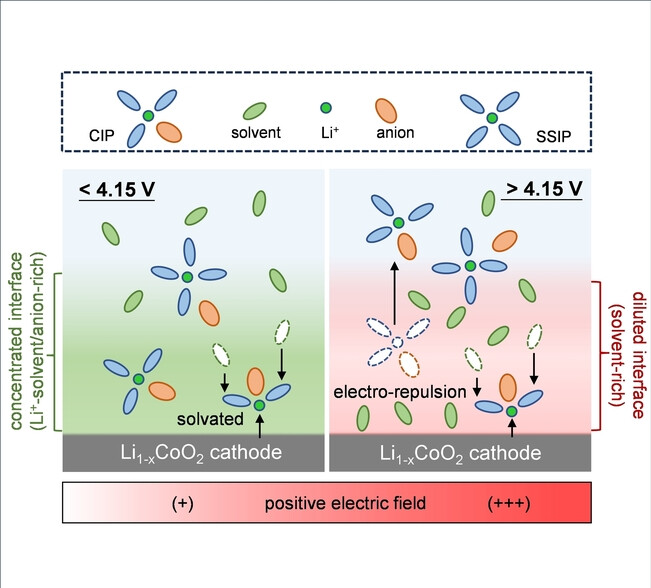
During the charging process of lithium cobalt oxide cathode, Li+ undergoes solvation, and Li+-complexes aggregate in the cathode-electrolyte interface, forming a concentrated interface. As the voltage increases, the intensified interfacial electric field exerts greater electro-repulsion on Li+, forming a diluted interface.
Oxygen Reduction
Modulating Spin of Atomic Manganese Center for High-Performance Oxygen Reduction Reaction
- First Published: 03 September 2024
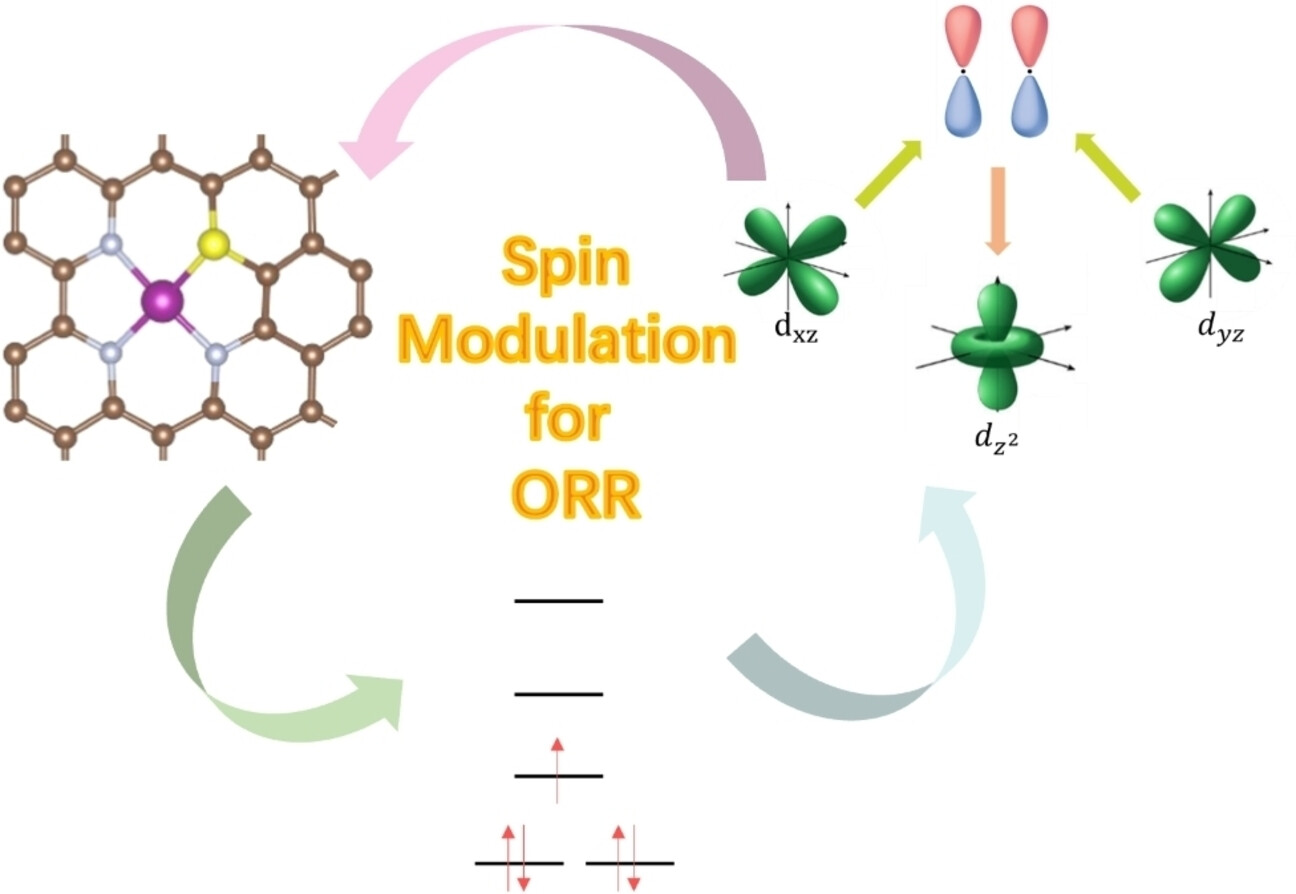
We report atomically dispersed manganese (Mn) embedded on nitrogen and sulfur co-doped graphene for ORR in alkaline electrolyte, realizing a half-wave potential (E1/2) of 0.883 V vs. reversible hydrogen electrode (RHE) with negligible activity degradation after 40,000 cyclic voltammetry (CV) cycles. Introducing sulfur (S) changes the spin state of single Mn atom from high-spin to low-spin, optimizing the oxygen intermediates adsorption.
Isotope Labeling | Very Important Paper
Nickel Catalyzed Carbonylative Cross Coupling for Direct Access to Isotopically Labeled Alkyl Aryl Ketones
- First Published: 15 August 2024

The development of an effective nickel-catalyzed carbonylative cross coupling of redox-activated alkyl carboxylic acids and aryl boronic acids is presented. A wide variety of alkyl aryl ketones is obtained in good yields, and the chemistry is easily applicable to stable and radiocarbon isotope labeling. The mechanism of the transformation has been investigated applying experimental and DFT methods.
Emissive Metal Halides
Controllable Multi-Exciton Zero-Dimensional Antimony-Based Metal Halides for White-light Emission and β-Ray Detection
- First Published: 11 September 2024
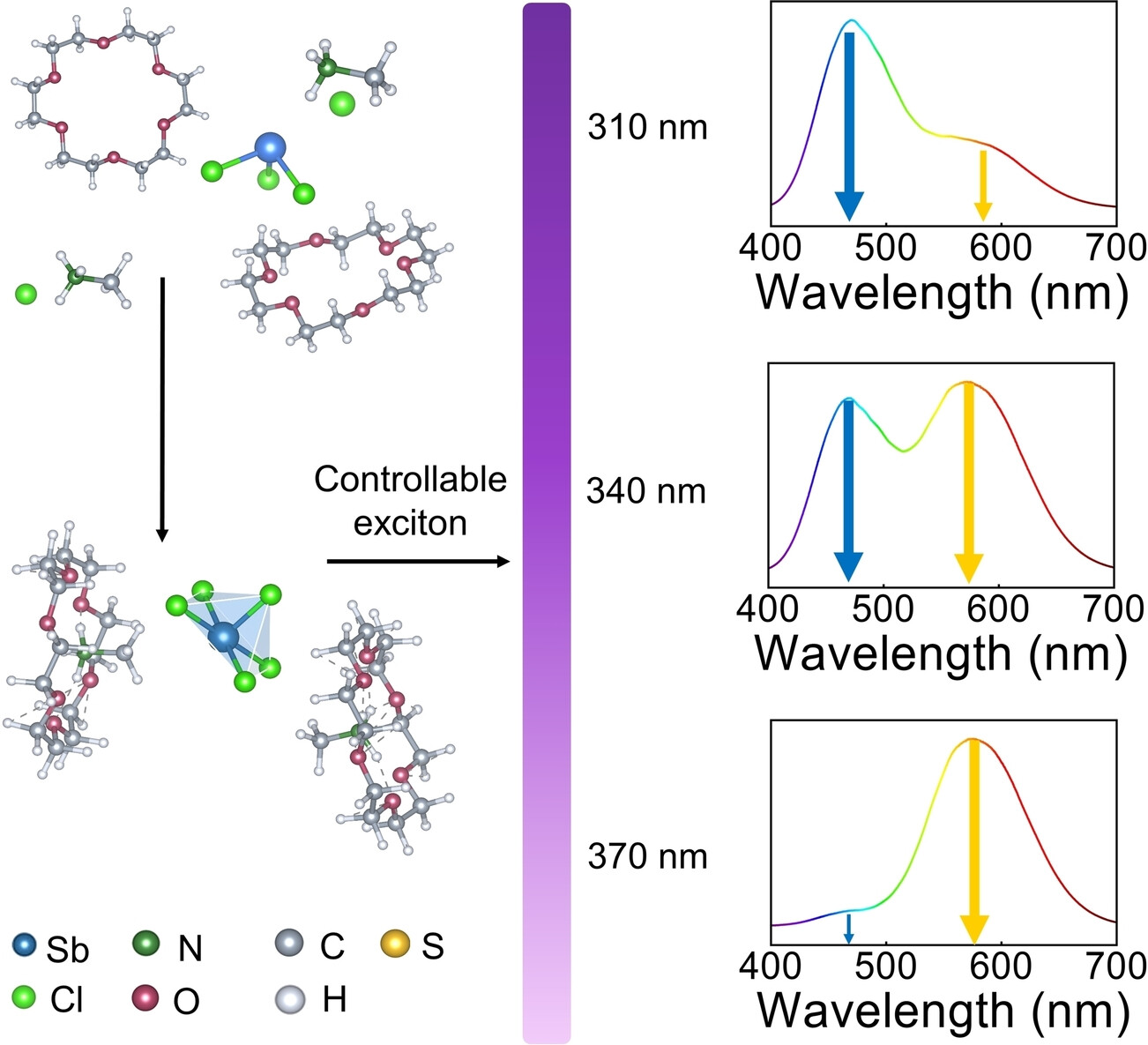
The [SbCl5]2− luminescent center structure is formed by self-assembly of SbCl3, methylamine hydrochloride, and 18-crown ether-6. This asymmetric structure can control the emission of singlet-triplet hybrid excitons by wavelength at room temperature. Under ultraviolet irradiation at 310 nm, it shows strong emission at 470 nm, white light emission under 340 nm irradiation, and strong emission at 570 nm under 370 nm irradiation.
CO Reduction Reaction
Steering the Selectivity of CORR from Acetate to Ethanol via Tailoring the Thermodynamic Activity of Water
- First Published: 19 August 2024
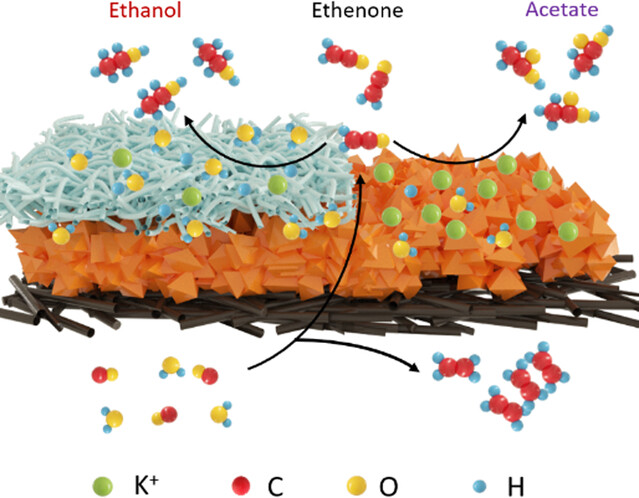
A universal approach was developed to tune the selectivity of Cu-based catalysts in CORR from acetate to ethanol by tailoring the thermodynamic activity of water. The faradaic efficiencies of ethanol and alcohol can reach 42.5 % and 55.1 % at 700 mA cm−2, respectively. The ability to control the selectivity of CORR opens up new possibilities for synthesizing a wider range of valuable chemical products from CO2.
Sodium-Sulfur Batteries | Very Important Paper
Stable Dendrite-Free Room Temperature Sodium-Sulfur Batteries Enabled by a Novel Sodium Thiotellurate Interface
- First Published: 29 August 2024
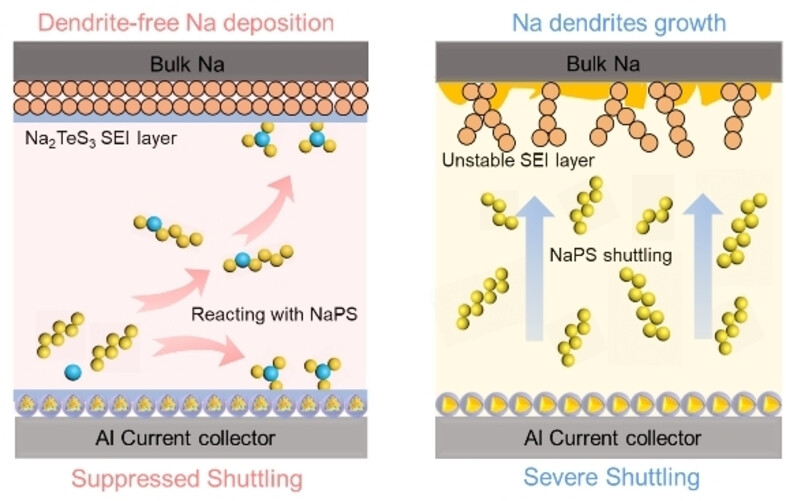
Novel sodium thiotellurate (Na2TeS3) interfaces are constructed both on the cathode and anode for Na−S batteries to simultaneously address the Na dendritic growth and polysulfide shuttling. Benefiting from this rational design, an anode-free cell fabricated with the Na2S/Na2Te@C cathode delivers an ultrahigh initial discharge capacity of 634 mAh g−1 at 0.1 C under practically necessary conditions, which could pave a new path to design high-performance cathodes for anode-free RT Na−S batteries.
Homogeneous Catalysis
Anilines Formation via Molybdenum-Catalyzed Intermolecular Reaction of Ynones with Allylic Amines
- First Published: 10 September 2024

An unprecedented and efficient approach for the synthesis of multi-substituted anilines was reported. With a simple Mo-catalyst, a wide range of 2,4-di and 2,4,6-trisubstituted anilines, some of which were otherwise challenging to access, were efficiently prepared in generally good yields from readily accessible ynones and allylic amines. This process was robust, modular and ready for the syntheses of various valuable multi-substituted anilines.
Helicenes | Hot Paper
Supramolecular Control of Helicene Circularly Polarized Luminescence Emitters in Molecular Solids and Bright Nanoparticles
- First Published: 03 September 2024

The intrinsic molecular chiroptical properties (electronic circular dichroism and circular polarized luminescence) of helicences are perfectly transferred from solution to the crystal state and to water-soluble nanoparticles by encapsulating the chiral emitter in supramolecular small-molecule, ionic isolation lattices (SMILES). Furthermore, CPL brightness is enhanced by combination with a rhodamine antenna system.
Synthetic Methods | Hot Paper
Expansion of Structure Property in Cascade Nazarov Cyclization and Cycloexpansion Reaction to Diverse Angular Tricycles and Total Synthesis of Nominal Madreporanone
- First Published: 06 August 2024

A cascade Nazarov cyclization/dicycloexpansions reaction for the efficient synthesis angularly fused M/5/N tricyclic skeletons (M=5, 6; N=4–9, 13) has been explored. In this novel transformation, the priority of ring expansion could be predicted by the rational design of the ring size and substituents. Employing the reaction as a key step, we finished total synthesis of nominal madreporanone for the first time.
Photocatalytic Nitrogen Fixation
Nanoporous Heterojunction Photocatalysts with Engineered Interfacial Sites for Efficient Photocatalytic Nitrogen Fixation
- First Published: 26 August 2024
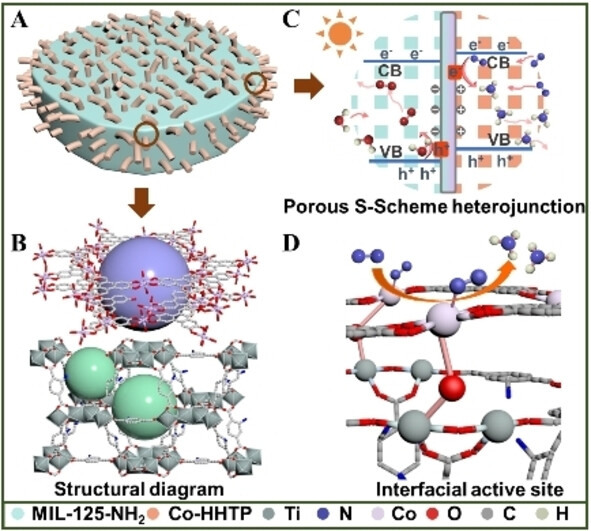
A nanoporous and chemically bonded S-Scheme heterojunction photocatalyst is synthesized by hybridization of two semiconducting MOFs, which exhibits excellent performance of photocatalytic nitrogen reduction reaction with an NH3 production rate of 2.1 mmol g−1 h−1, an apparent quantum yield value of 16.2 % at 365 nm and a solar-to-chemical conversion efficiency of 0.28 %.
Perovskites
Vacancy Effect on the Luminescent and Water Responsive Properties of Vacancy-Ordered Double Perovskite Derivatives
- First Published: 13 August 2024
Anti-counterfeiting
Synchronously Improved Multiple Afterglow and Phosphorescence Efficiencies in 0D Hybrid Zinc Halides With Ultrahigh Anti-Water Stabilities
- First Published: 17 August 2024
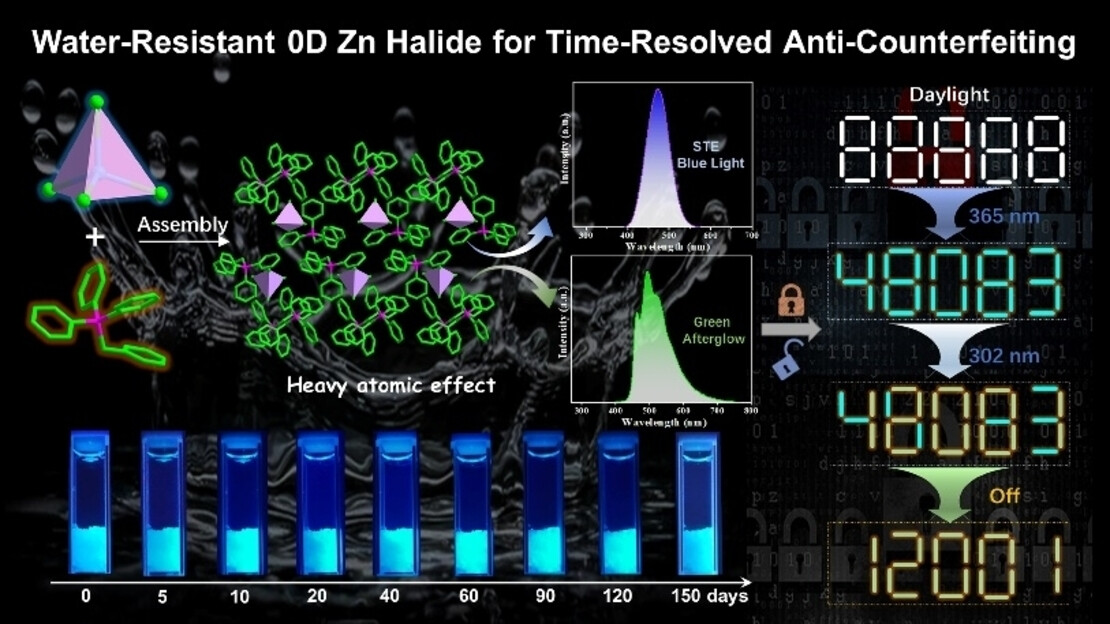
New 0D hybrid Zn halide family with high water-resistance and simultaneous integration of cyan STE emission and ultralong green afterglow was firstly synthesized by skillfully manipulating metal halides and organic phosphors as independent optical centers. Through regulating heavy atom effect to control the intersystem crossing rate and spin-orbit coupling, the dormant emitting units were significantly activated resulting in unprecedented high emission efficiency for both STE and afterglow emissions in 0D hybrid metal halides, which was applied for color-time-dual-resolved anti-counterfeiting and information encryption-decryption.
Chiral COFs | Very Important Paper
Homochiral Covalent Organic Frameworks with Superhelical Nanostructures Enable Efficient Chirality-Induced Spin Selectivity
- First Published: 24 August 2024
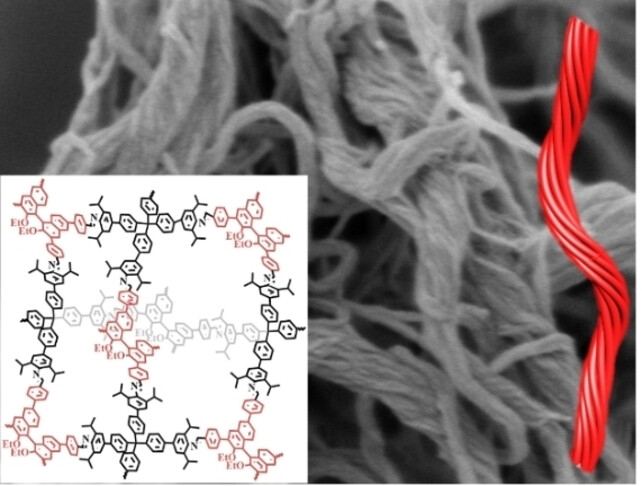
Homochiral superhelical COF nanofibers were synthesized by manipulating the lengths of alkyl chains in enantiopure BINOL-based organic linkers. The resulting 3D chiral COFs formed right- and left-handed superhelix fibers with macroscopic chirality. These nanofibers exhibit significantly enhanced enantiodiscrimination in carbohydrate binding and a remarkable chirality-induced spin selectivity (CISS) effect.
Solid-state Electrolytes
Facile Synthesis of Potassium Decahydrido-Monocarba-closo-Decaborate Imidazole Complex Electrolyte for All-Solid-State Potassium Metal Batteries
- First Published: 06 September 2024
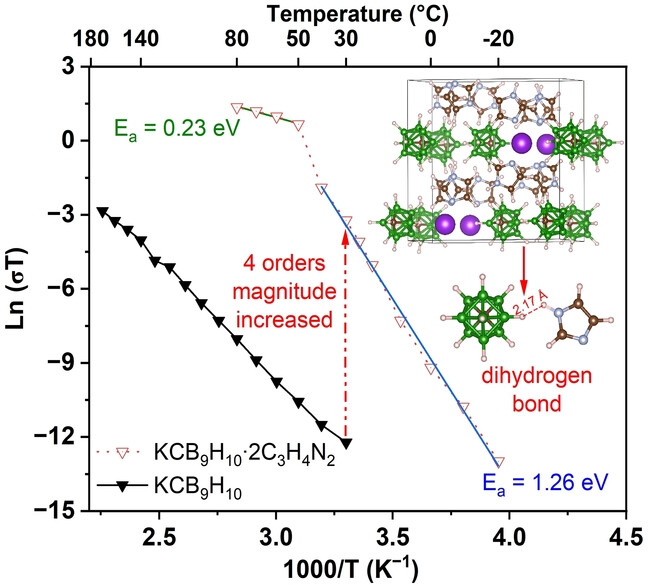
A newly synthesized complex, KCB9H10 ⋅ 2C3H4N2, with the dihydrogen bond structural features, exhibits a high ionic conductivity of 1.3×10−4 S cm−1 at 30 °C, four orders of magnitude greater than that of KCB9H10 and the highest ionic conductivity reported to date for hydridoborate-based K+ conductors. This work offers a promising strategy for synthesizing solid K-ion conductors with enhanced conductivity.
Perovskite Solar Cells | Very Important Paper
One-Stone-For-Three-Birds Strategy Using a Fullerene Modifier for Efficient and Stable Inverted Perovskite Solar Cells
- First Published: 16 August 2024

A novel fullerene derivative (denoted as C60-TMA) is synthesized and employed to modify the interface between perovskite and C60. C60-TMA can passivate the surface defects to suppress non-radiative recombination, form a cascade energy level to facilitate electron extraction, and induce secondary growth of perovskite, contributing to a champion PCE of 24.89 % for inverted PSCs with significantly improved thermal stability.
Iron Porphyrins | Hot Paper
Operando Spectroelectrochemistry Unravels the Mechanism of CO2 Electrocatalytic Reduction by an Fe Porphyrin
- First Published: 19 August 2024
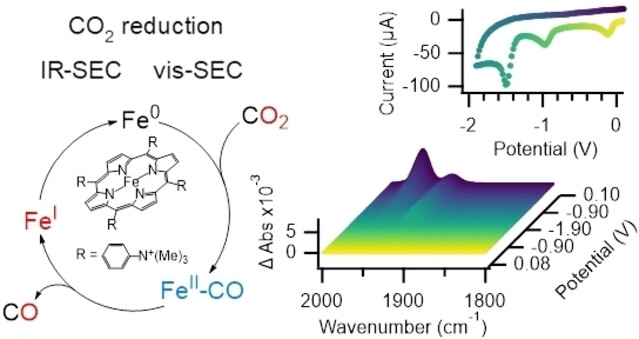
A comprehensive experimental investigation of the mechanistic aspects of the selective electroreduction of CO2 to CO by an iron porphyrin using IR and UV/Visible absorption spectroelectrochemistry provides operando insights at molecular scale. In addition to the main catalytic cycle involving FeI species as resting state, a secondary pathway involving the protonation of the porphyrin ligand into a phlorin ligand at the Fe0 level was identified.
Photocatalysis
Cyclic Sulfoximines as Methyl and Perdeuteromethyl Transfer Agents and Their Applications in Photoredox Catalysis
- First Published: 05 September 2024

Under photoredox catalysis, novel heterocyclic sulfoximines serve as methyl and perdeuteromethyl radical sources. The reagents are bench-stable and easy-to-use. Various radical acceptors can be applied leading to products in good yields. Up-scaling has been achieved by using a photoflow reactor. Physicochemical studies suggest a photoredox process.
Covalent Organic Frameworks
Mild and Scalable Conditions for the Solvothermal Synthesis of Imine-Linked Covalent Organic Frameworks
- First Published: 06 September 2024
Super-Resolution Imaging | Very Important Paper
Super-Resolved Protein Imaging Using Bifunctional Light-Up Aptamers
- First Published: 08 August 2024

Fusions of protein-binding aptamers to the fluorescent light-up aptamer RhoBAST enabled visualization of GFP-tagged or endogenous proteins in both fixed and live mammalian cells. The fast exchange of the fluorogen yields intermittent fluorescence required for super-resolved imaging by RhoBAST-PAINT, a single-molecule localization technique.
Cluster Compounds
Boron Cluster Anions Dissolve En Masse in Lipids Causing Membrane Expansion and Thinning
- First Published: 18 September 2024
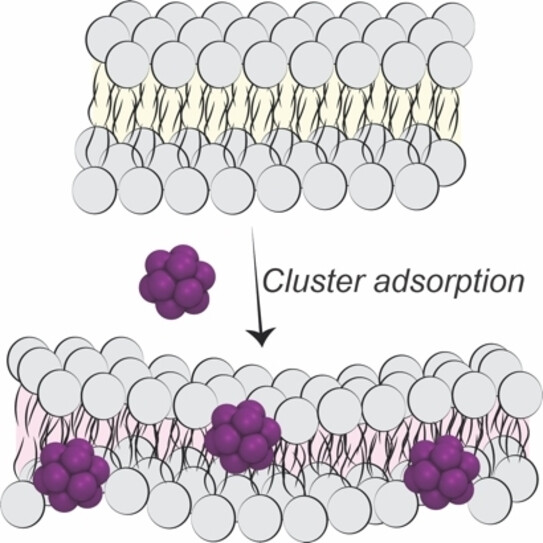
Superchaotropic dodecaborate cluster anions adsorb efficiently on lipid mono- and bilayers, affecting the physical properties of the membrane more strongly than conventional chaotropic anions. Cluster immersion in the bilayer leads to a reorganization of the lipid chains, affording hybrid organic–inorganic membranes with expanded surface area per lipid as well as thinner membranes with increased fluidity.
Supercapacitors | Hot Paper
Bioactive Ion-Confined Ultracapacitive Memristors with Neuromorphic Functions
- First Published: 18 September 2024

Pronounced physisorption of bioactive cations with a hydrophobic alkyl chain by porous carbons with a negative zeta potential results in confined cations, which triggers anion enrichment and depletion under electric polarization and enables rapid differential ionic memresistance behavior for cations with strong and weak interactions with porous carbons.
Photochemical Reactions
In Situ Generation of 1-Acetylpyrene as a Visible-Light Photocatalyst for the Thia-Paternò-Büchi Reaction
- First Published: 27 September 2024

The unexpected discovery of the photosensitization properties of 1-acetylpyrene for the thia-Paternò–Büchi reaction enabled the limitations of this hetero-cycloaddition reaction to be tackled in terms of substrate scope and efficiency. The synthesis of a wide range of thietanes from intrinsically unstable thiocarbonyls was made possible by the use of pyrenacyl sulfides as a source of both the thiocarbonyl substrate and the photocatalyst.
Polymer Chemistry
Cyclic Acetals as Expanding Monomers to Reduce Shrinkage
- First Published: 10 September 2024

The Van-der-Waals distance of a thiol and ene is depicted. After the thiol-ene reaction a thioether bond is formed resulting in a shorter interatomic distance. This shrinkage leads to stress in the polymer which can be reduced by radical-mediated redox-rearrangements catalyzed by thiols. A compact cyclic acetal extent to a longer linear ester. This volumetric expansion is counteracting the shrinkage resulting from the thiol-ene reaction.
Crystallization | Hot Paper
From Ions to Crystals: A Comprehensive View of the Non-Classical Nucleation of Calcium Sulfate
- First Published: 07 October 2024

Calcium sulfate is a mineral of considerable relevance for various industrial and geochemical processes. In the present work, the formation of calcium sulfate dihydrate (gypsum) crystals from aqueous solutions has been elucidated in detail through application of a complementary suite of advanced characterization techniques. The results show how crystalline order emerges from intrinsically disordered precursors and highlights the complexity of mineral nucleation.
Biosynthesis
Pyrrolizwilline, a Unique Bacterial Alkaloid Assembled by a Nonribosomal Peptide Synthetase and non-Enzymatic Dimerization
- First Published: 20 October 2024

The biosynthesis of pyrrolizwilline produced by XhpA-G was elucidated in Xenorhabdus hominickii using a promoter exchange approach together with heterologous expression of xhpA-G in E. coli. We also report the structural characterization of XhpG, the key enzyme in the conversion of the intermediate pyrrolizixenamide to pyrrolizwilline.
Peptide Biomaterials | Very Important Paper
Chaperone-Derived Copper(I)-Binding Peptide Nanofibers Disrupt Copper Homeostasis in Cancer Cells
- First Published: 24 October 2024
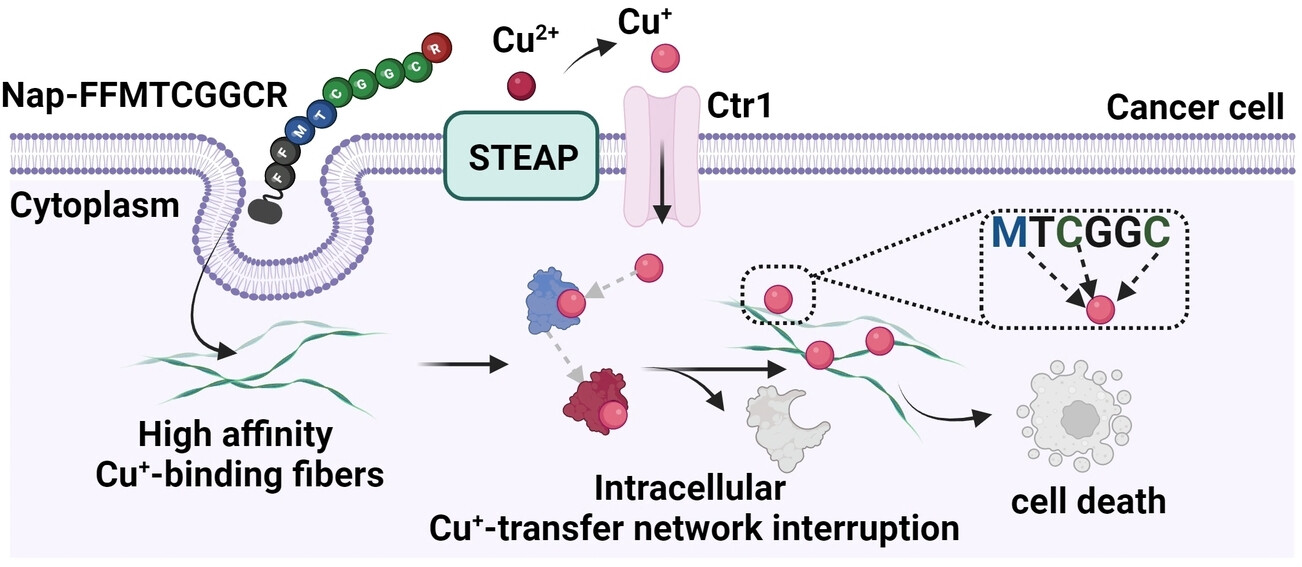
We present a chaperone-derived Cu+-binding peptide featuring the conserved MTCGGC Cu+ binding motif, which self-assembles into nanofibers within cancer cells. These nanofibers have multiple MTCGGC Cu+-binding motifs on their surfaces, allowing for efficient capture of intracellular Cu+ ions. This process disrupts the Cu+ homeostasis network of cancer cells. Our study offers a novel therapeutic intervention targeting metal ion homeostasis in cancer.
Hydrogen Tunneling
Phenyl Radical Activates Molecular Hydrogen Through Protium and Deuterium Tunneling
- First Published: 30 September 2024

Activating the strong H2 bond is typically reserved for transition metals, and only a few main group systems can tackle this challenge. Here, we explore a phenyl radical mediated pathway utilizing the photolysis of iodobenzene. The phenyl radical leverages the high C−H bond energy of the forming benzene to drive H2 activation. Low-temperature experiments and dual level instanton computations reveal hydrogen tunneling as a critical factor.
Electrocatalytic CO2 Reduction
Engineering a Cu-Pd Paddle-Wheel Metal–Organic Framework for Selective CO2 Electroreduction
- First Published: 24 October 2024
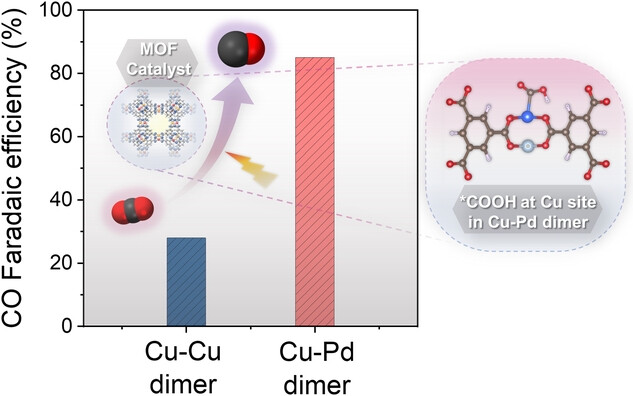
The synthesis of atomically precise Cu−Pd dimers within the nodes of a Cu-MOF was confirmed through detailed XAS experiments. DFT calculations suggest that the Pd atom in the Cu−Pd dimer modulates the binding energy of the key *COOH intermediate on the neighboring Cu site, leading to enhanced selectivity for electrocatalytic CO production during CO2 reduction.
Diboriranes
π-Complexes Derived from Non-classical Diboriranes: Side-on vs. End-on Carbonylative Ring Expansion
- First Published: 16 October 2024

We report first π-complexes derived from non-classical diboriranes (three-membered aromatic B2C rings) and their carbonylative ring expansion to four- and five-membered cyclic ligands. The H-bridged diborirane (R=2,3,5,6-tetramethylphenyl; R’=H) initially reacts with Fe2(CO)9 to an allylic π-complex, which further reacts under side-on addition of CO to the B−B moiety to an η5-coordinated five-membered B2C2O ring. For R’=SnMe3, CO is added end-on to the B−B bond.
Conjugated Polymers | Very Important Paper
Near-Infinite-Chain Polymers with Ge=Ge Double Bonds
- First Published: 23 October 2024
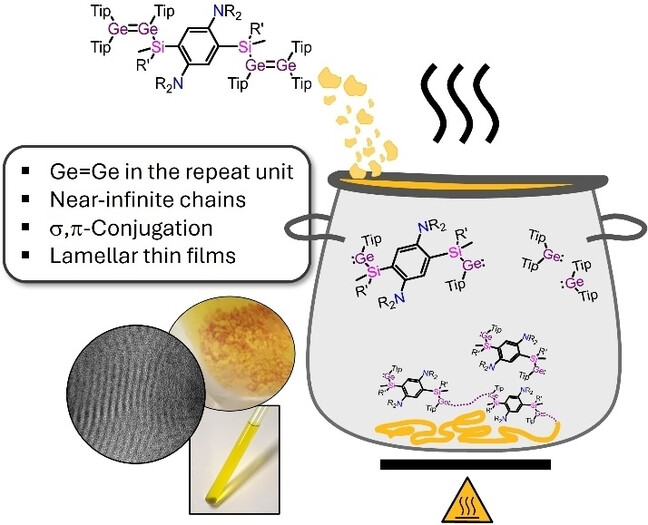
Polymers with Ge=Ge double bonds in the σ,π-conjugational path are obtained via heavier acyclic diene metathesis of bis(digermene)s. High solubility and interchain dispersion interactions allow for near-infinite chains and deposition as thin films with ordered lamellar bundles. With the absorption in the visible range corresponding to small HOMO–LUMO gaps, this new class of conjugated materials is promising for various applications.
Interfaces
Controllable Graphene/MoS2 Heterointerfaces by Perpendicular Surface Functionalization
- First Published: 08 November 2024
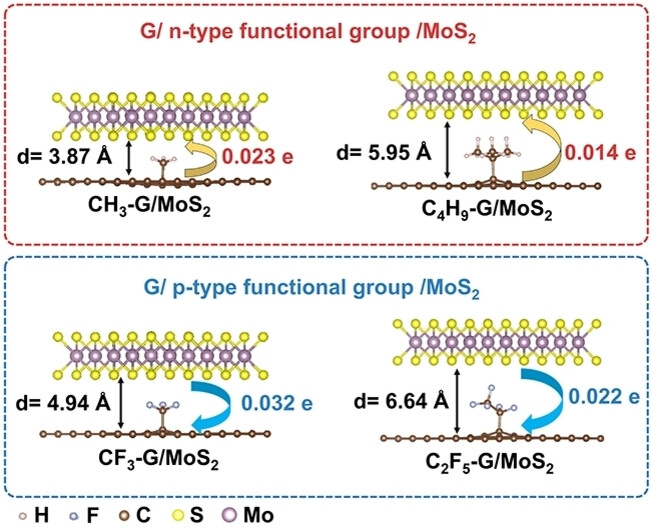
The van der Waals interfaces of graphene/MoS2 heterostructures are tuned through controlled functionalization of the bottom graphene layer. Adjusting the size of the functional groups enables nm-scale modification of interlayer distances. Both the size and electronic properties of the functional groups are key to regulating charge transport, with size being particularly decisive.
Communication
Chemical Biology
Cell-Permeable Nicotinamide Adenine Dinucleotides for Exploration of Cellular Protein ADP-Ribosylation
- First Published: 04 September 2024
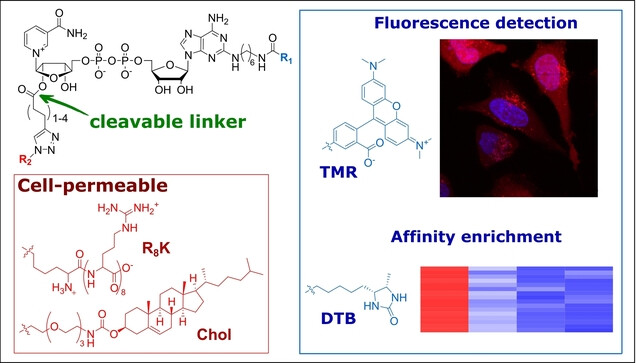
We present a synthesis of cell-permeable NADs bearing fluorescent (TAMRA) or affinity (desthiobiotin) tag and their utility for ADP-ribosylation studies in living cells. Cell-permeability was achieved by modification with cholesterol or polyarginine. The probes were accepted by all tested PARP enzymes. The optimized desthiobiotin-labelled NAD+ was used for affinity enrichment and identification of proteins ADP-ribosylated upon oxidative stress.
Covalent Organic Frameworks | Hot Paper
Mechanochemical Synthesis of Boroxine-linked Covalent Organic Frameworks
- First Published: 05 July 2024
Mass Spectrometry
Are Hydroxyl Radicals Spontaneously Generated in Unactivated Water Droplets?
- First Published: 06 September 2024
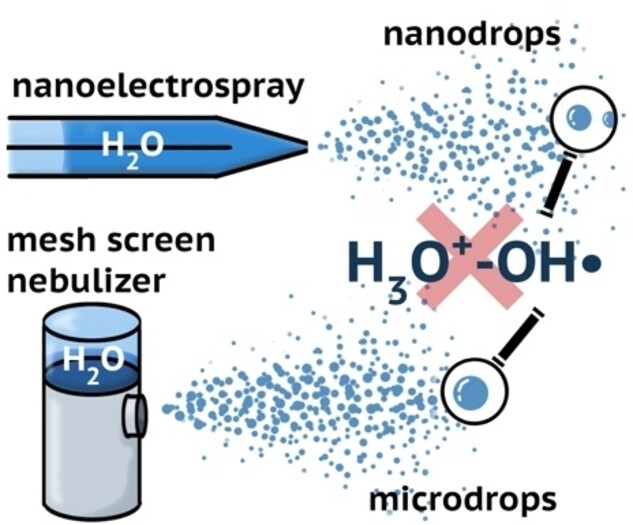
Spontaneous reactions of water in either highly charged nanodrops formed by electrospray ionization, or less highly charged microdroplets formed by a vibrating mesh screen nebulizer were investigated. No evidence for ionized water dimer, nor oxidation products of the radical scavengers caffeine or melatonin was observed over a wide range of droplet size, net charge, and lifetime, indicating that water is stable at the surface of unactivated water droplets.
Oxygen Reduction Reaction | Hot Paper
Machine Learning-Aided Discovery of Low-Pt High Entropy Intermetallic Compounds for Electrochemical Oxygen Reduction Reaction
- First Published: 06 October 2024
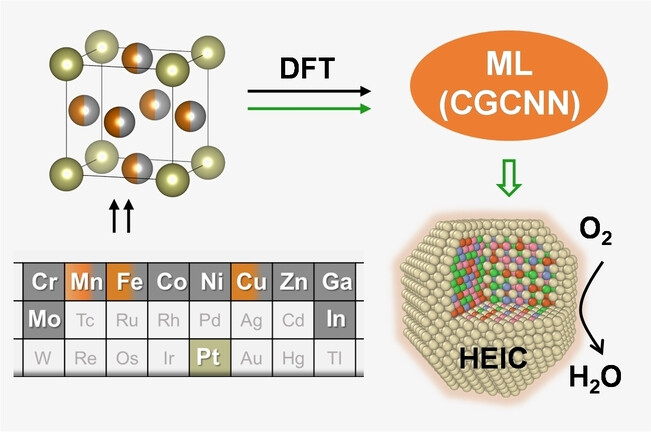
A machine learning strategy utilizing crystal graph convolutional neural networks is proposed for the rational design of low-Pt high entropy intermetallic compounds (PtM3 type, where M=transition metal) for the oxygen reduction reaction. The developed Pt(FeCoNiCu)3/C catalyst, featuring small nanoparticle size, exhibits exceptional mass and specific activity, along with significantly enhanced electrochemical stability.
Electrochemistry in Flow
An Automated Electrochemical Flow Platform to Accelerate Library Synthesis and Reaction Optimization
- First Published: 24 September 2024

An automated electrochemical flow platform for operator-free data generation is presented, leveraging slug-based reaction mixtures for low material consumption. This platform was employed in the context of library synthesis of 44 medicinal chemistry-relevant compounds. The platform was also used to optimize one previously unsuccessful target via DoE, leading to a 6-fold yield increment.
Boron Chemistry
Selective Hydroboration of C−C Single Bonds without Transition-Metal Catalysis
- First Published: 01 August 2024

We present a general system for the hydroboration of C−C single bonds without transition-metal catalysts. Our strategy surpasses the transition-metal systems regarding chemo- and regioselectivities, substrate scopes, or yields. Mechanistic studies, DFT, and IBO calculations revealed a hydroborane-promoted C−C bond cleavage and a hydride shift reaction pathway. The key role of the carbonyl group and the nitrogen atom of the amide was disclosed.
Natural Products | Hot Paper
Flow Batteries | Very Important Paper
Zinc-Ferricyanide Flow Batteries Operating Stably under −10 °C
- First Published: 05 September 2024
Oligosiloxanes | Hot Paper
A Clean One-Pot Synthesis of Structurally Ordered Linear, Monocyclic, and Bicyclic Oligosiloxanes
- First Published: 22 August 2024
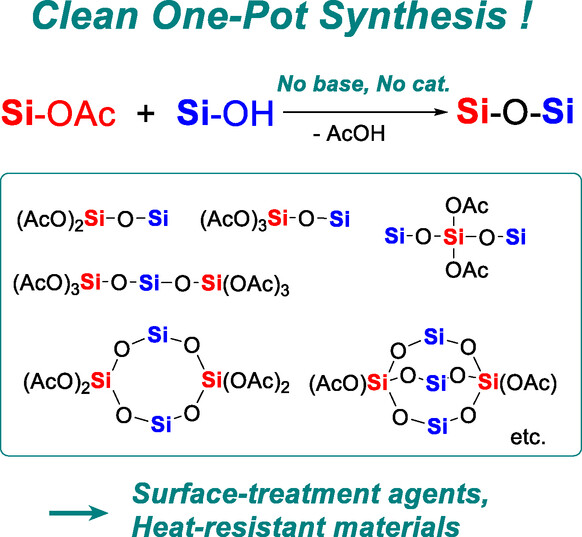
Di-, tri-, and tetraacetoxysilanes reacted with silanols or silanediols under base- and catalyst-free conditions to selectively generate acetoxy-containing di- and trisiloxanes. Cyclotetrasiloxanes and bicyclic pentasiloxanes with precisely constructed structures were obtained from successive one-pot reactions of a tetraacetoxysilane with various silanediols. The acetoxy-containing oligosiloxanes can serve as efficient surface-treatment agents and as new building blocks for heat-resistant materials.
Hypervalent Compounds
The Trifluorooxygenate Anion [OF3]−: Spectroscopic Evidence for a Binary, Hypervalent Oxygen Species
- First Published: 15 October 2024
Synthetic Methods
Asymmetric Synthesis of β-Ketoamides by Sulfonium Rearrangement
- First Published: 23 October 2024

The addition of chiral sulfinimines to keteniminium ions generated through electrophilic amide activation enables a [3,3]-sigmatropic sulfonium rearrangement to yield enantioenriched β-ketoamides in a single step. The transformation proceeds with high enantio- and chemoselectivity as well as functional group tolerance, and—in contrast to imide-based chiral auxiliary approaches—directly delivers stereochemically stable amide products.
Carbon-Carbon Bond Activation | Hot Paper
Carbon-Carbon Bond Activation at Chromium(I): An 11-Electron Complex Cleaving Dialkynes
- First Published: 28 October 2024




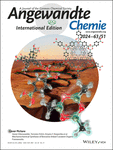
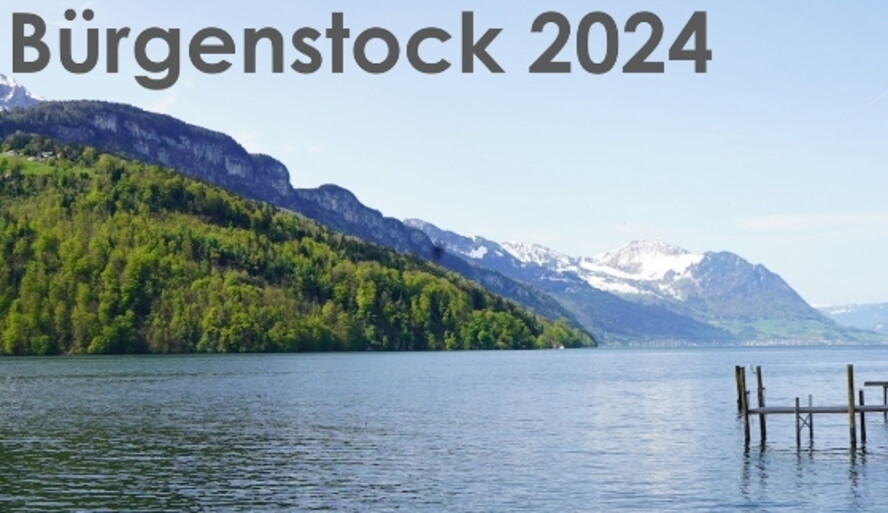
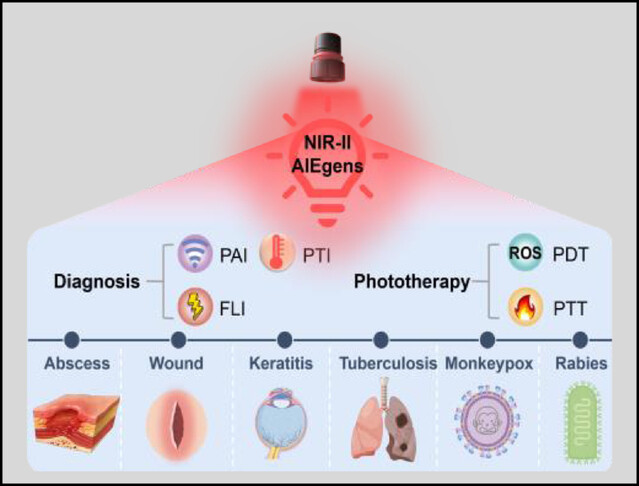
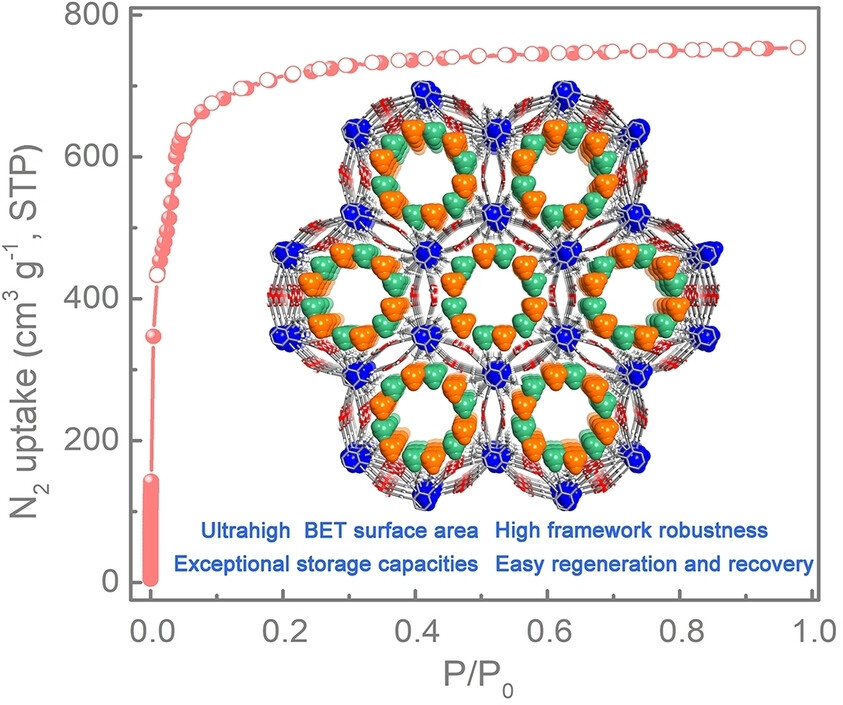

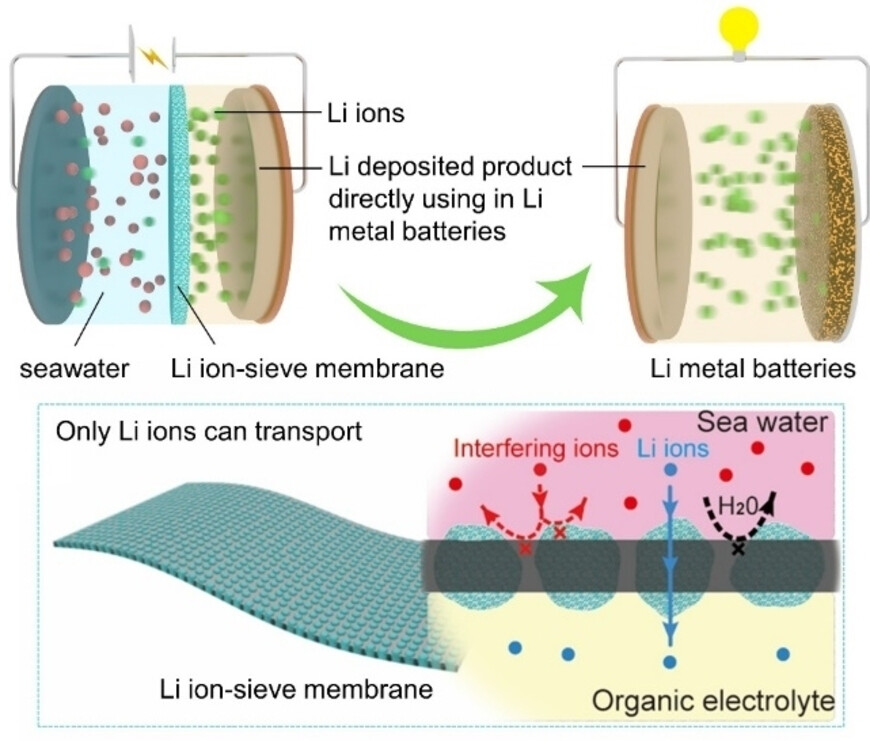
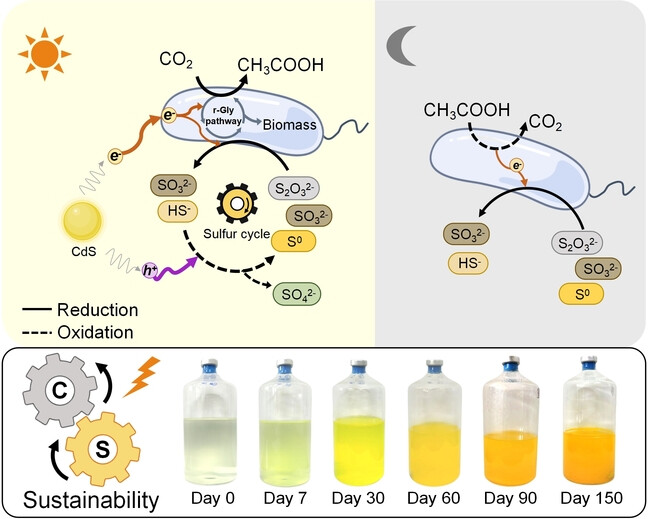
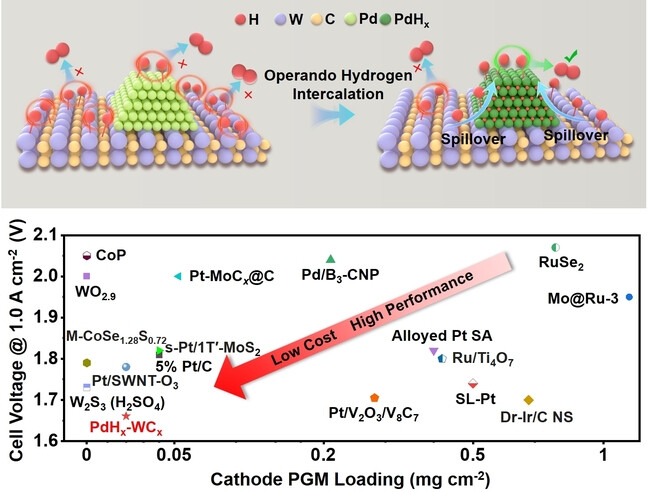
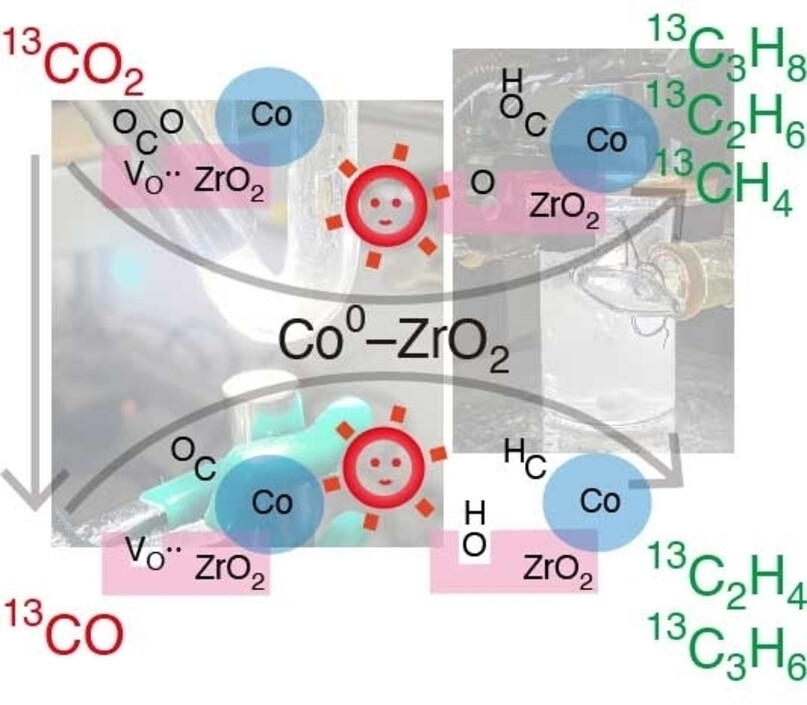
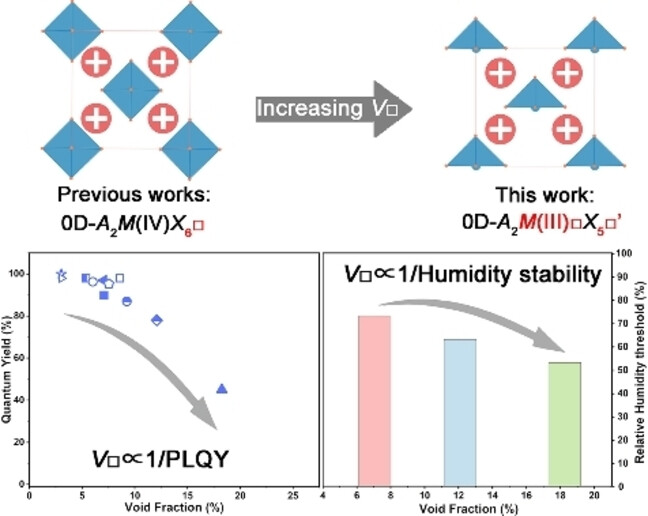

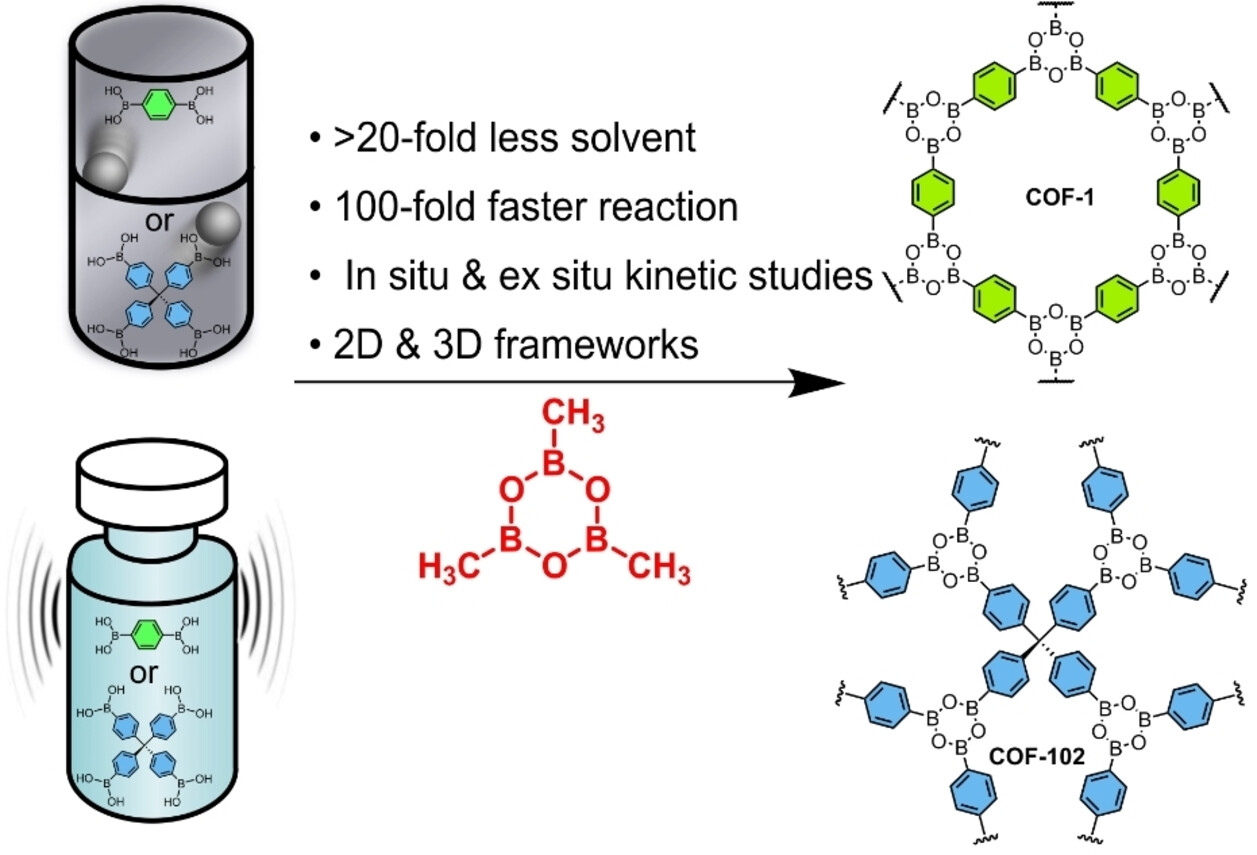
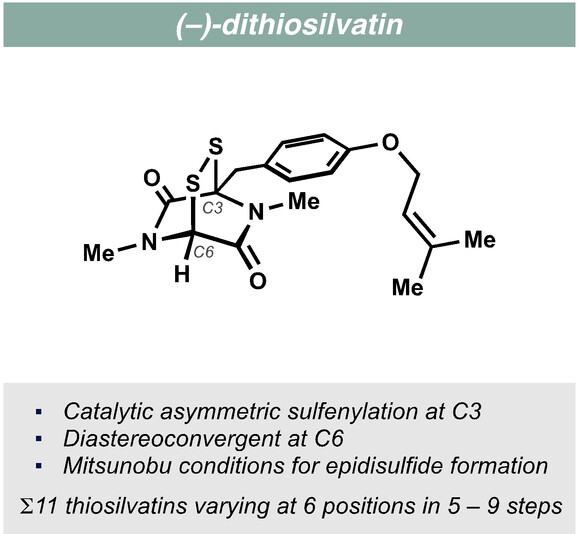
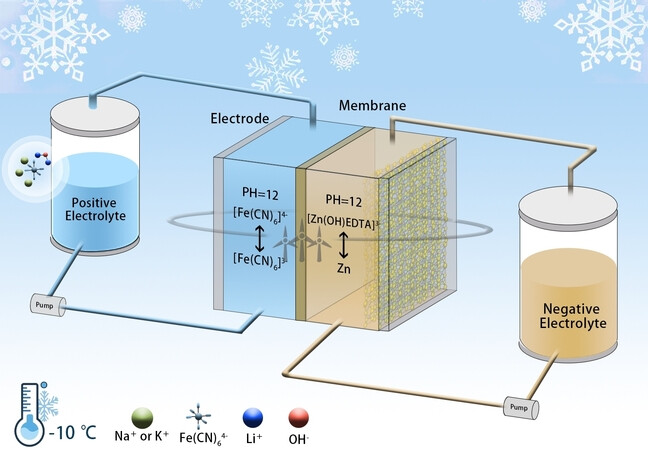
![The Trifluorooxygenate Anion [OF3]−: Spectroscopic Evidence for a Binary, Hypervalent Oxygen Species](/cms/asset/116f5956-2c1f-4be7-97ff-2aefb7c7590d/anie202413758-toc-0001-m.jpg)
